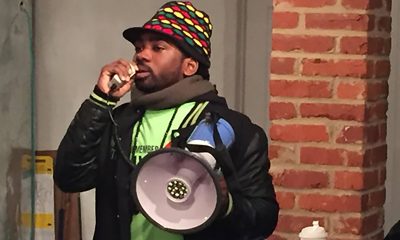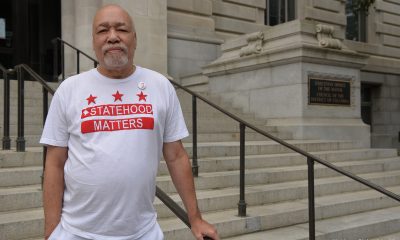Arts & Entertainment
Spotlight on Anacostia
Ward 8 arts initiative could be ‘transformational’ for neighborhood

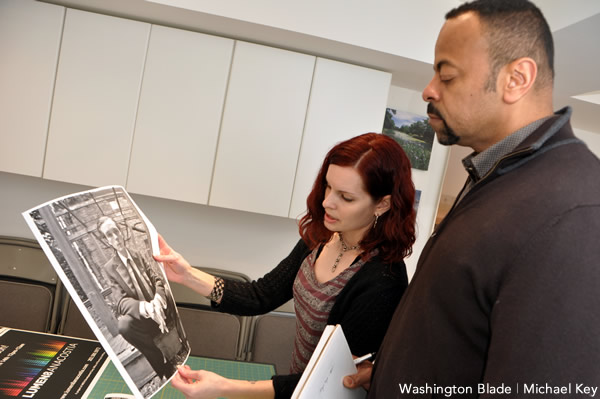
Andrea Hope and Tommie Adams look over prints he hopes to have exhibited in the Lumen8Anacostia festival in April. (Blade photo by Michael Key)
With the Smithsonian here and a host of other well-established galleries hosting exhibits — sometimes of national renown — it’s easy to get overlooked in the Washington art scene. But there’s a flourishing art community east of the Anacostia River, a handful of galleries and, come April, a bounty of opportunities for everyone to see them both in the established art houses there and in a bevy of abandoned buildings and warehouses.
Anacostia, just one of the Ward 8 D.C. Southeast neighborhoods east of the River, is changing. On April 14, residents there will launch Lumen8Anacostia, a three-month arts initiative that’s using a $250,000 grant the D.C. Office of Planning received from ArtPlace (a collaboration of nine of the country’s top foundations, eight federal agencies and six large banks that supports “creative placemaking” with grants and more) to be administered to four D.C. neighborhoods (the others are Brookland, Deanwood and the central 14th Street area N.W.) to create temporary art and culture spaces in “emerging” neighborhoods where vacant and/or underutilized storefronts and empty lots will be transformed into art knolls. Arch Development Corporation, which has been working since 1991 to revitalize historic Anacostia with several initiatives and economic development plans, is implementing Lumen8.
Though not an LGBT-specific initiative, one of the organizers, Jeffrey Herrell, is gay and his partner, Tommie Adams, is hoping to have his photography exhibited in one of the spaces. They moved to Anacostia in 2005, delighted at the amount of house and yard they could get for a fraction of the price they would have paid in Washington’s glitzier neighborhoods. Herrell says they love the neighborhood and are delighted to see its cultural side being tapped.
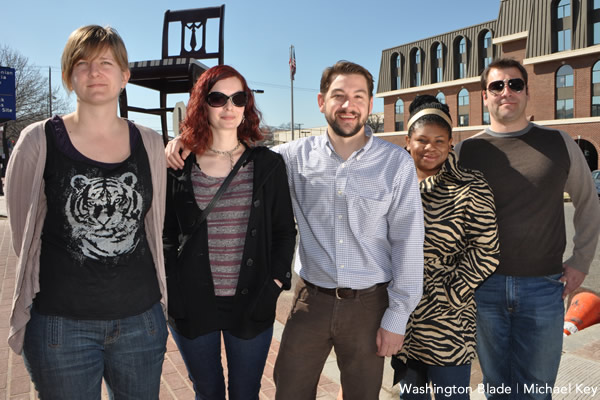
Lumen8 organizers from left are Beth Ferraro, Andrea Hope, Jeffrey Herrell, Nikki Peele and Phil Hutinet. (Blade photo by Michael Key)
“I’m a big ambassador for Anacostia,” Herrell says. “I’m always trying to get my friends to move here and I’ve succeeded a few times. I have great neighbors here. Yes, there have been some ups and downs … but I think [the neighborhood] has been stigmatized. … The neighbors are extremely close, really tight in terms of friendships and the neighborhood kind of brings you together. I really like living here.”
Herrell says he knows two artists who live on his street and has another neighbor who’s an actor/performance artist. His next-door neighbor is also gay, there’s a lesbian couple on his block and another he knows of a couple blocks over. He and Adams say gays in Dupont and Logan would be surprised to discover how easygoing most straight Anacostia residents are with their LGBT neighbors.
“People here really don’t care,” Adams says. “Sometimes the kids will say something at first, but people here don’t really care if there are differences. I guess they have worse issues to deal with.”
Anacostia does, of course, have its problems. About 94 percent black (Ward 7 is 96 percent), Ward 8 residents are plagued with the city’s highest unemployment rate — 35 percent according to the latest figures available from NeighborhoodInfo D.C., a partnership between the Urban Institute and the Washington D.C. Local Initiatives Support Corporation — and 20 violent crimes per 1,000 residents in 2010. Both, sadly, are the highest rates of D.C.’s eight wards (Ward 7’s unemployment rate is 19 percent for those 16 and older; Ward 3 has the lowest with just 3.4 percent of its 16-and-older residents out of work).
But those figures are part of the reason Lumen8 organizers say Anacostia needs some light, quite literally. In addition to the various exhibits planned, organizers plan to illuminate several Anacostia buildings for the festival. A portion of the grant money will go to Intelligent Lighting Company, which will project lights and images on several buildings there.
“We’re lighting it up literally as well as trying to shine an overall spotlight on the neighborhood,” Herrell says.
“So few people really know the location, they think Anacostia is everything east of the river,” says Nikki Peele, an Arch employee who lives in Congress Heights, another Ward 8 neighborhood. “Even lifelong D.C. residents sometimes think that. They’re not sure of the history here, what’s here to do. For too many people, the information they have is that this is a somewhat scary place, so for a project like this, especially on this scale, it has the opportunity to be a transformational moment and not just for the community but for the outside perception of it … it’s very much a family community with an almost village-like feel. … the name was chosen for a reason — to bring both light and understanding.”
Organizers are selecting artists to have their work shown now from a pool of about 20 applicants who heard about the event through neighborhood listserves and word of mouth. After the April 14 kickoff, exhibitors will have to agree to have their gallery spaces open each Saturday and then six hours on another day during the week for the rest of April, May and June. Aside from the neighborhood’s existing three galleries, space such as a former police warehouse and several vacant storefronts on Martin Luther King Avenue and Good Hope Road will be converted into temporary exhibition space. Portions of the funds from the grant will be used to convert the various spaces and to give to the artists to realize their visions for their exhibits.
Herrell says it’s a good opportunity for both D.C. residents in general and also for the Anacostia artists, most amateurs, who’ve never had their work exhibited before.
“They may not be able to afford to open their own store, but this will give them a taste of what it’s like,” he says.
“It’s a very large-scale project,” says Phil Hutinet, Arch’s chief operating officer. “It’s going to be a huge benefit to the artistic community and to the neighborhood.”
Photos
PHOTOS: Montgomery County Pride in the Plaza
LGBTQ celebration held in downtown Silver Spring
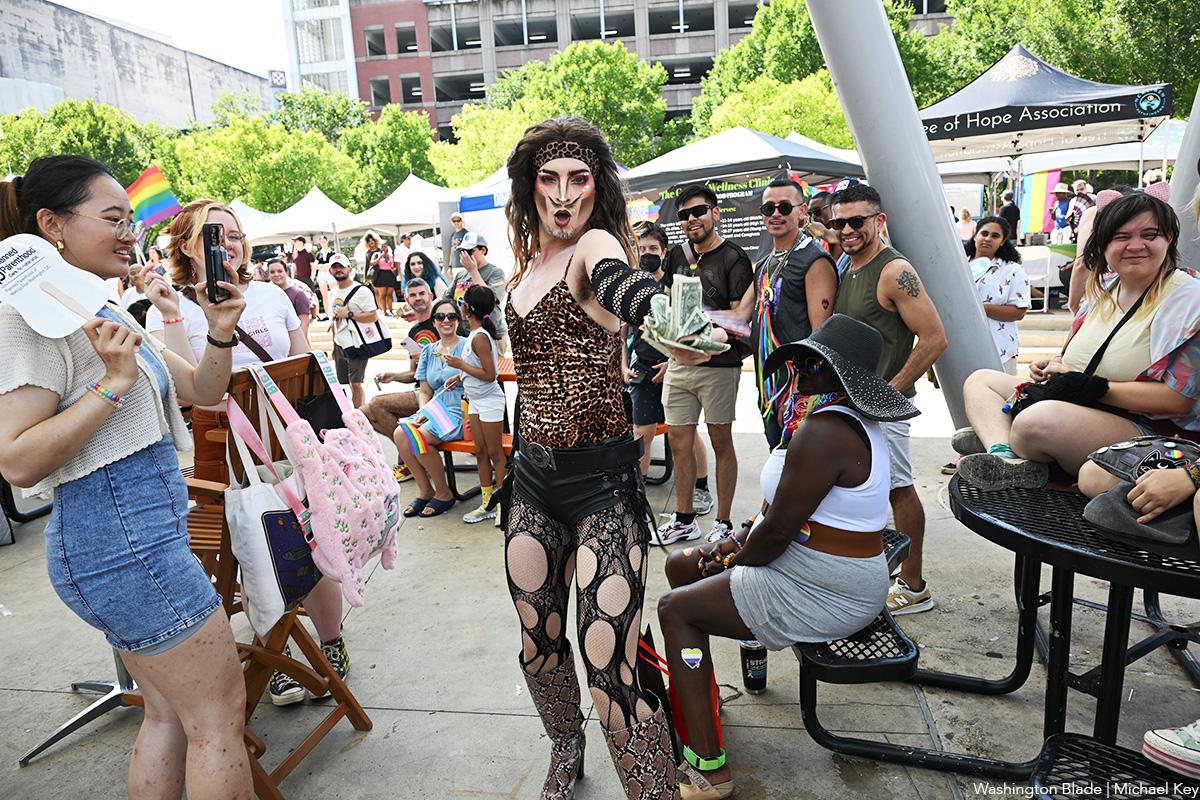
Montgomery County Pride in the Plaza was held on Sunday, June 29 at Veterans Plaza in Silver Spring, Md.
(Washington Blade photos by Michael Key)
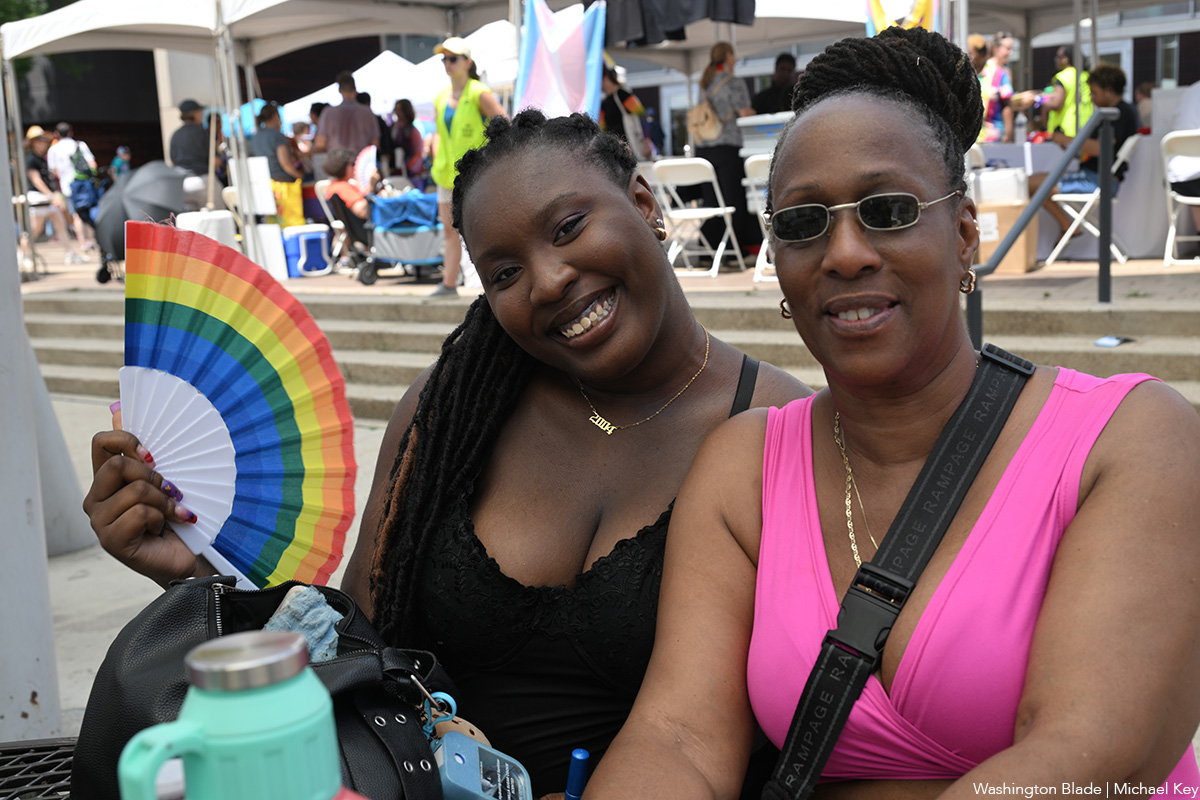
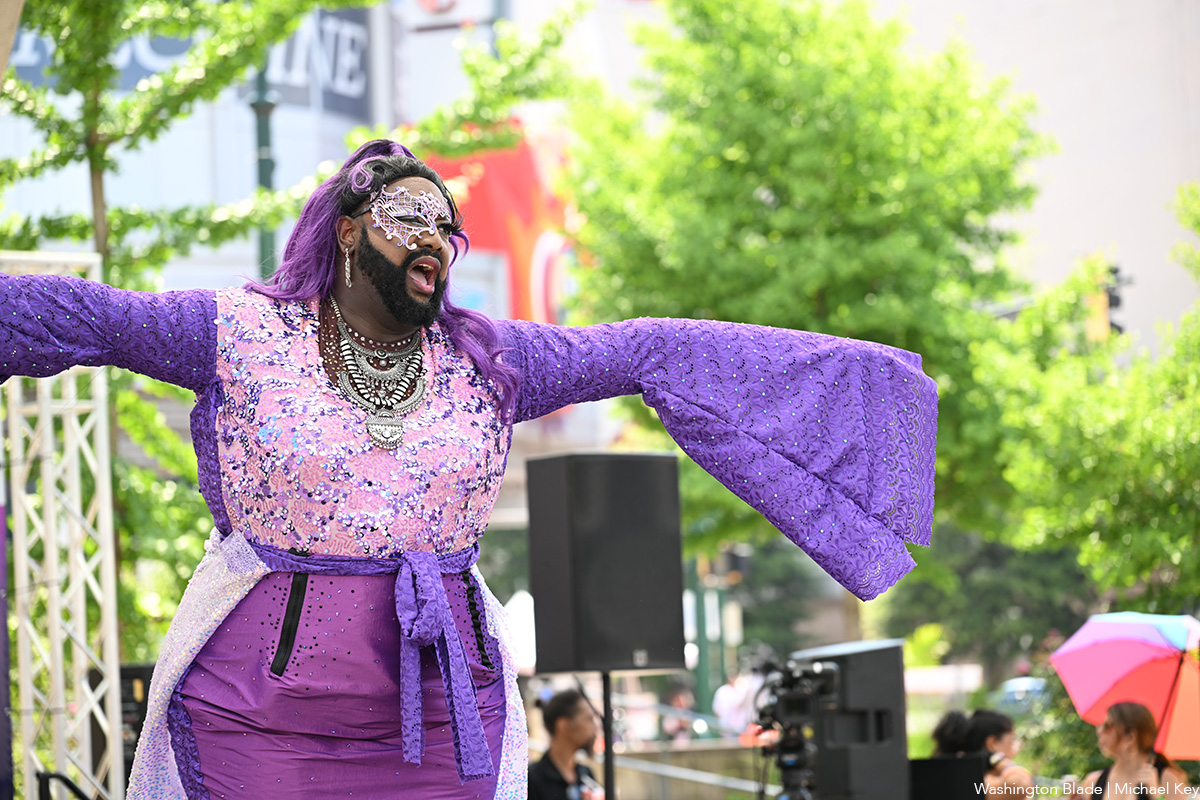
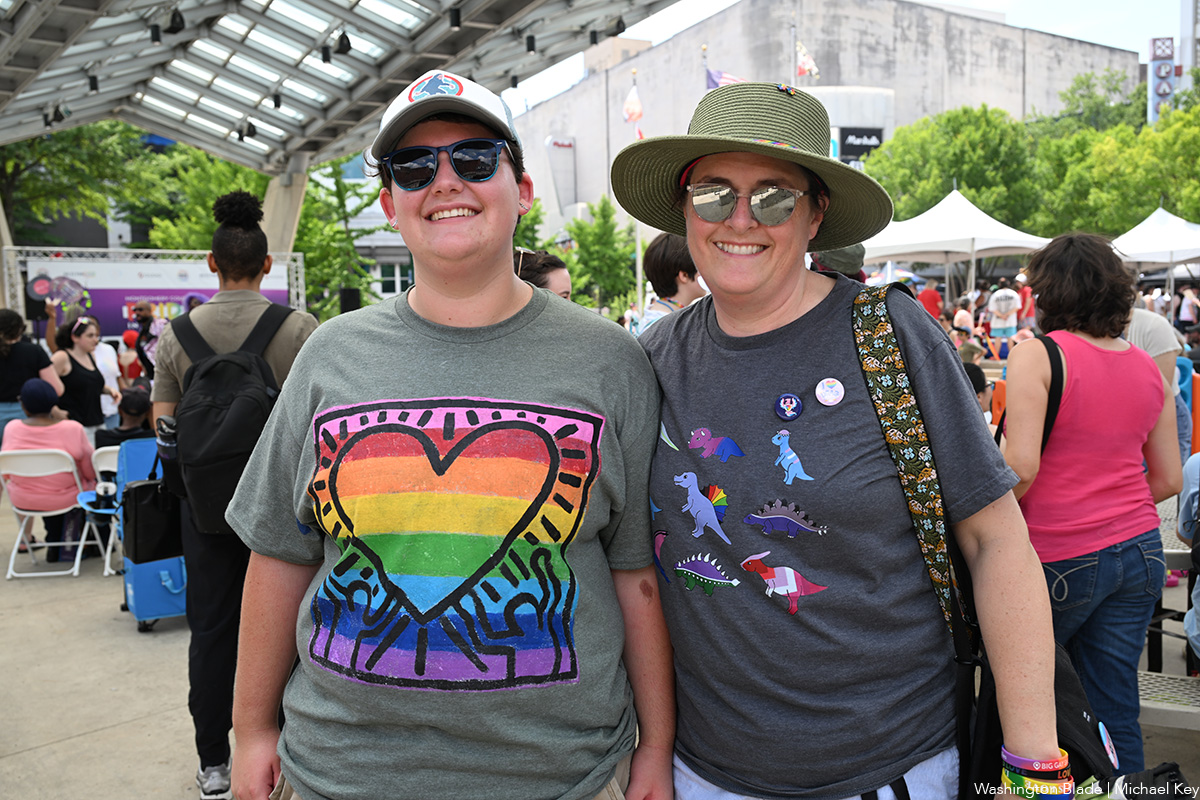
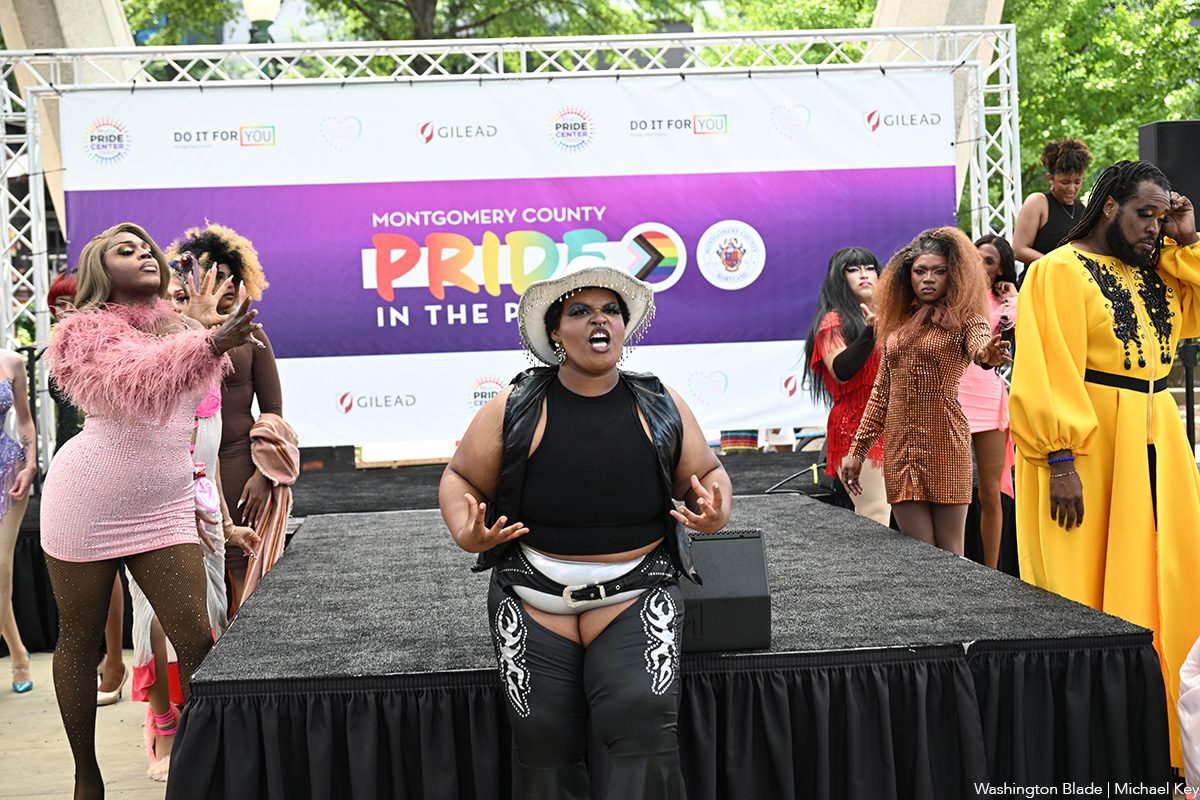
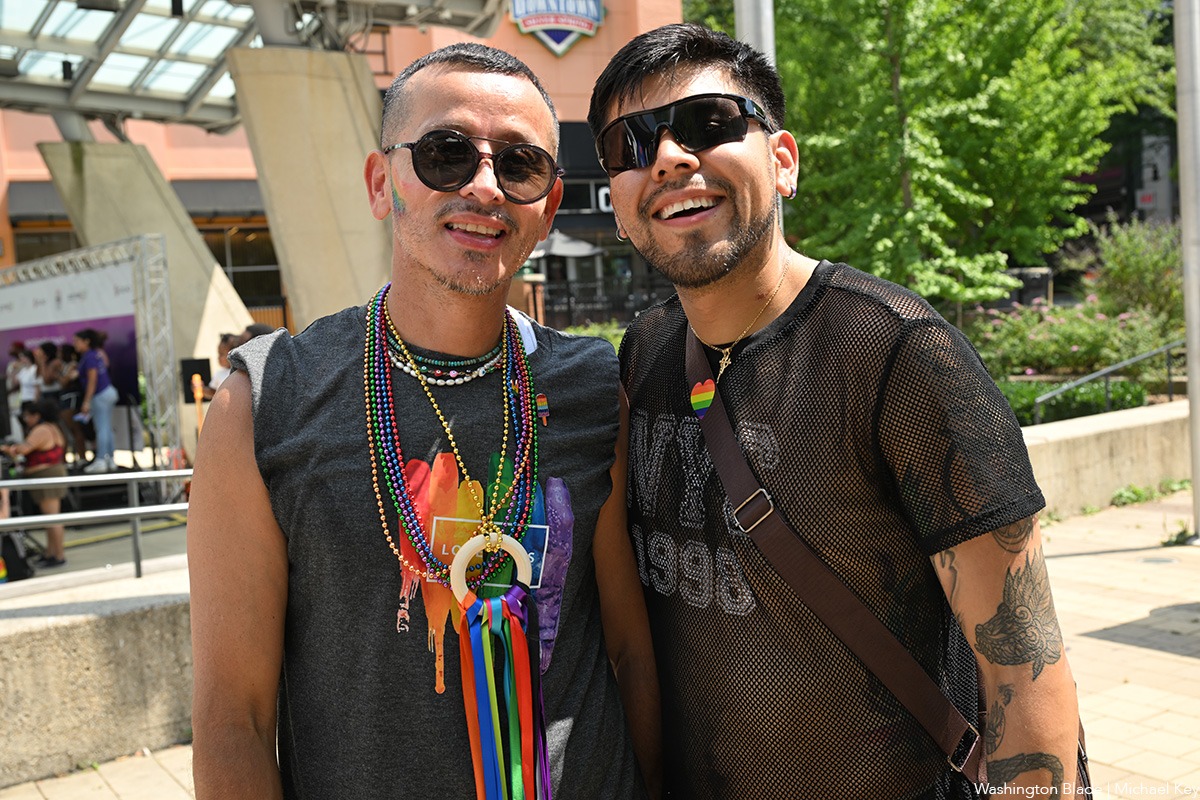

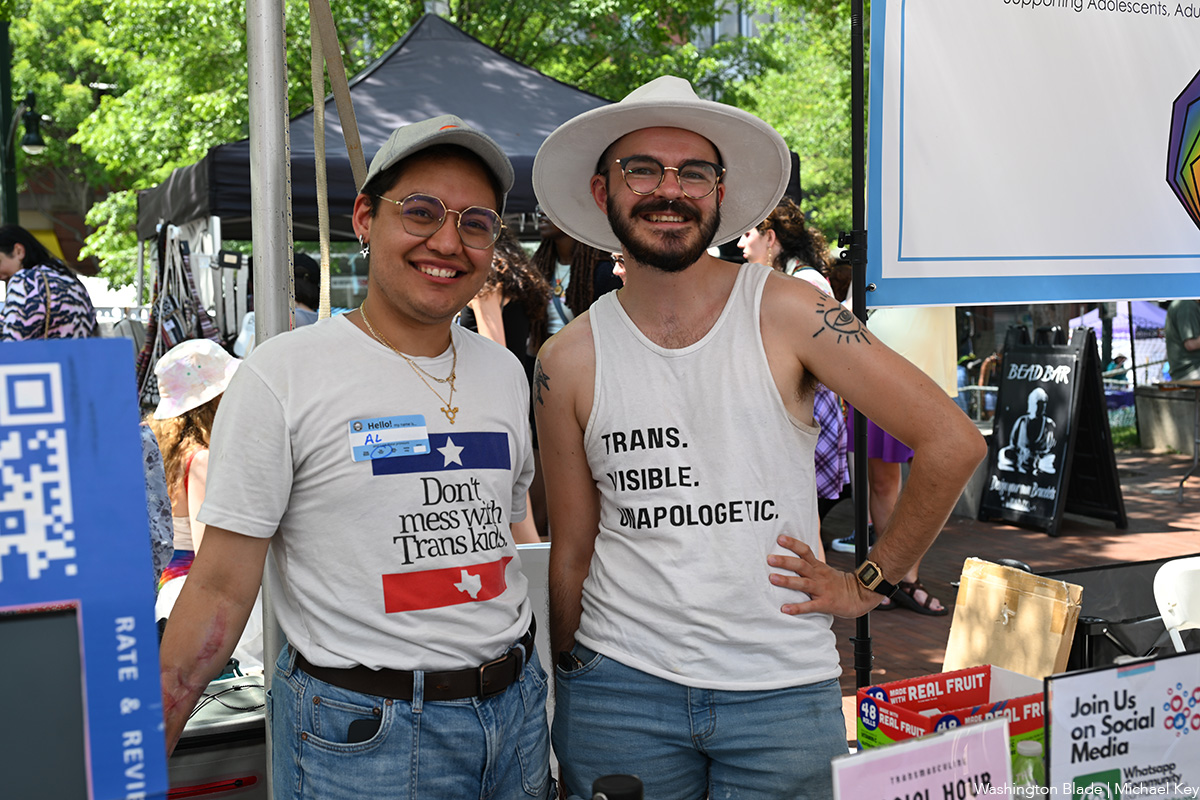
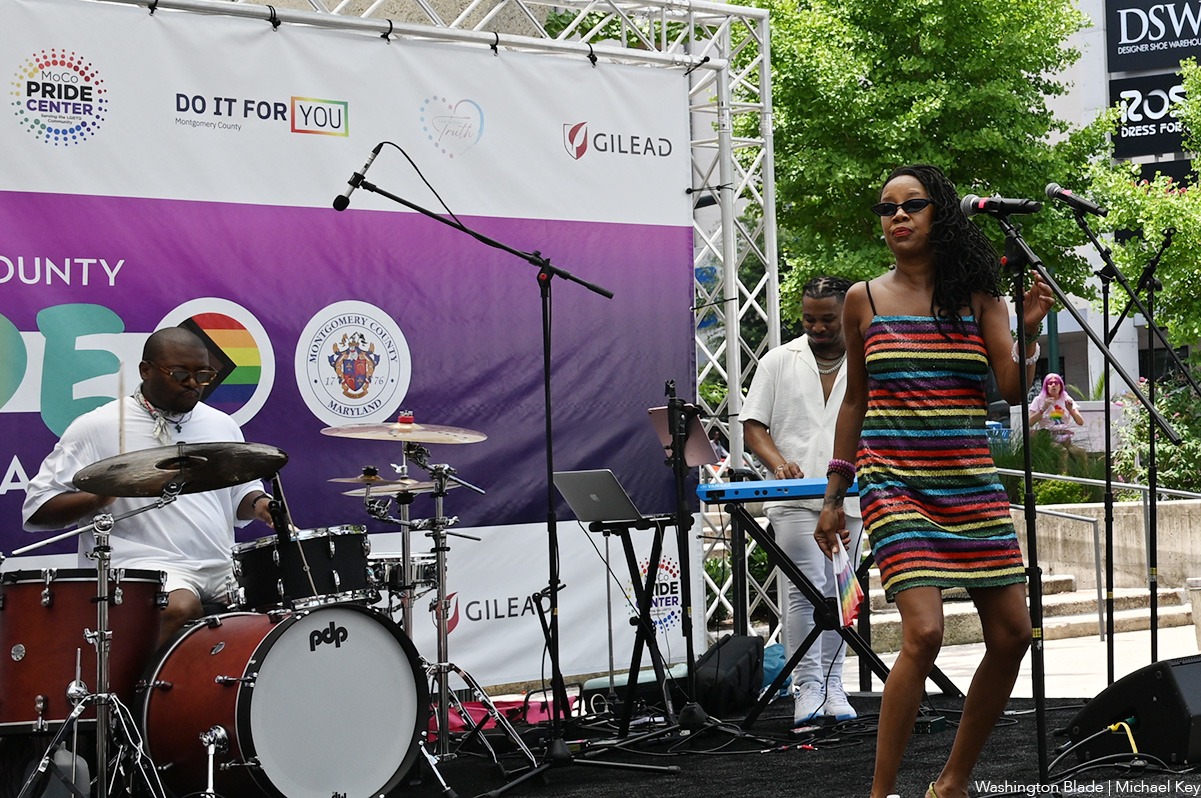
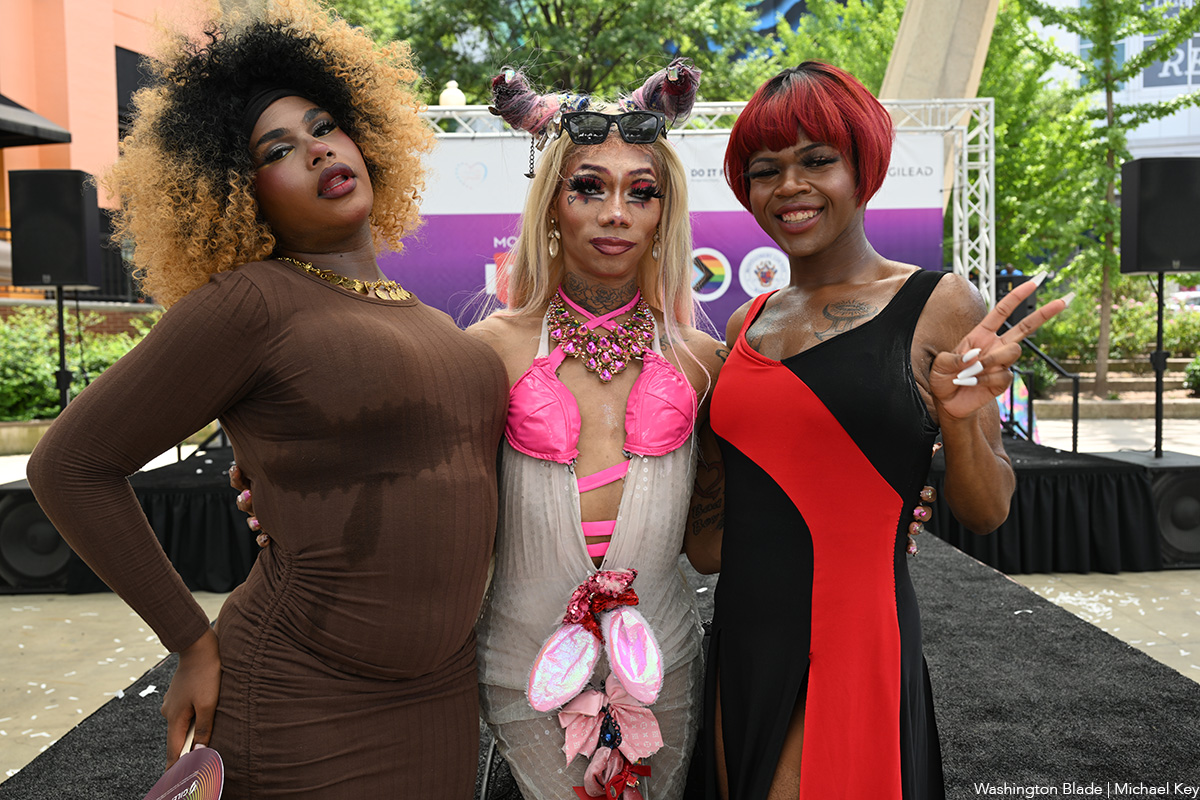
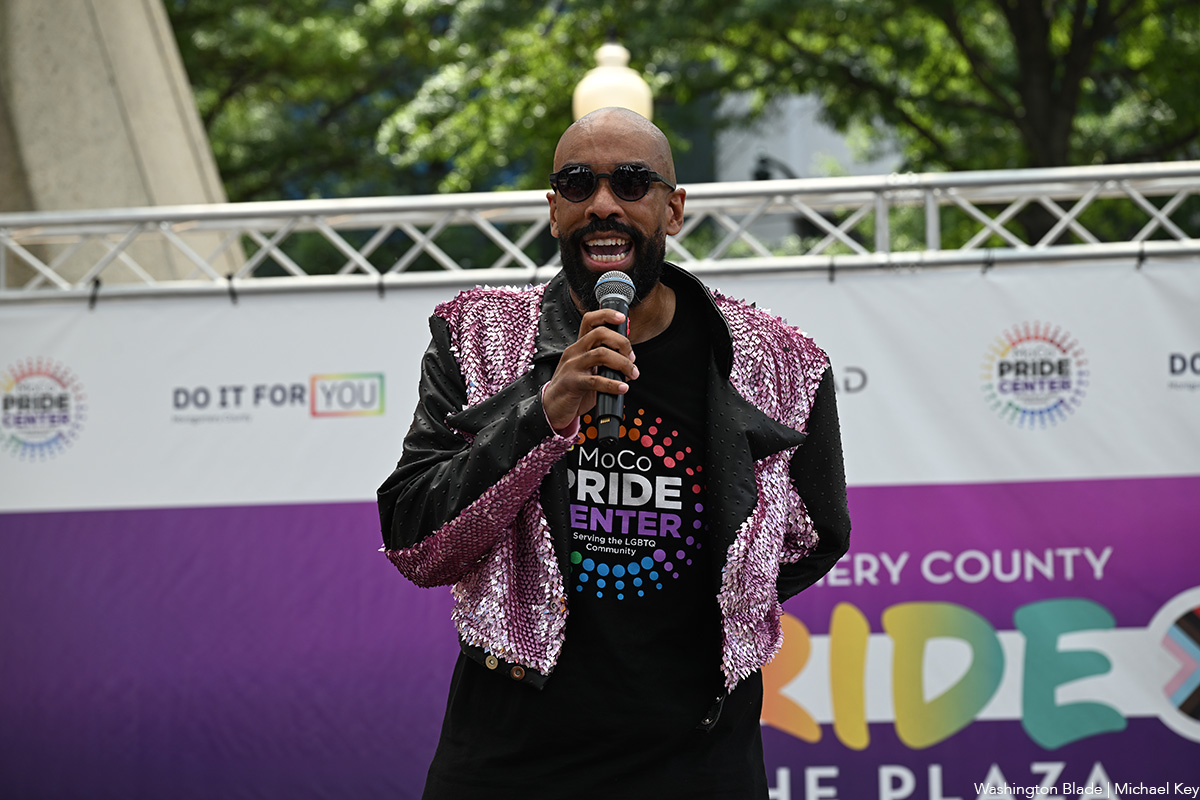
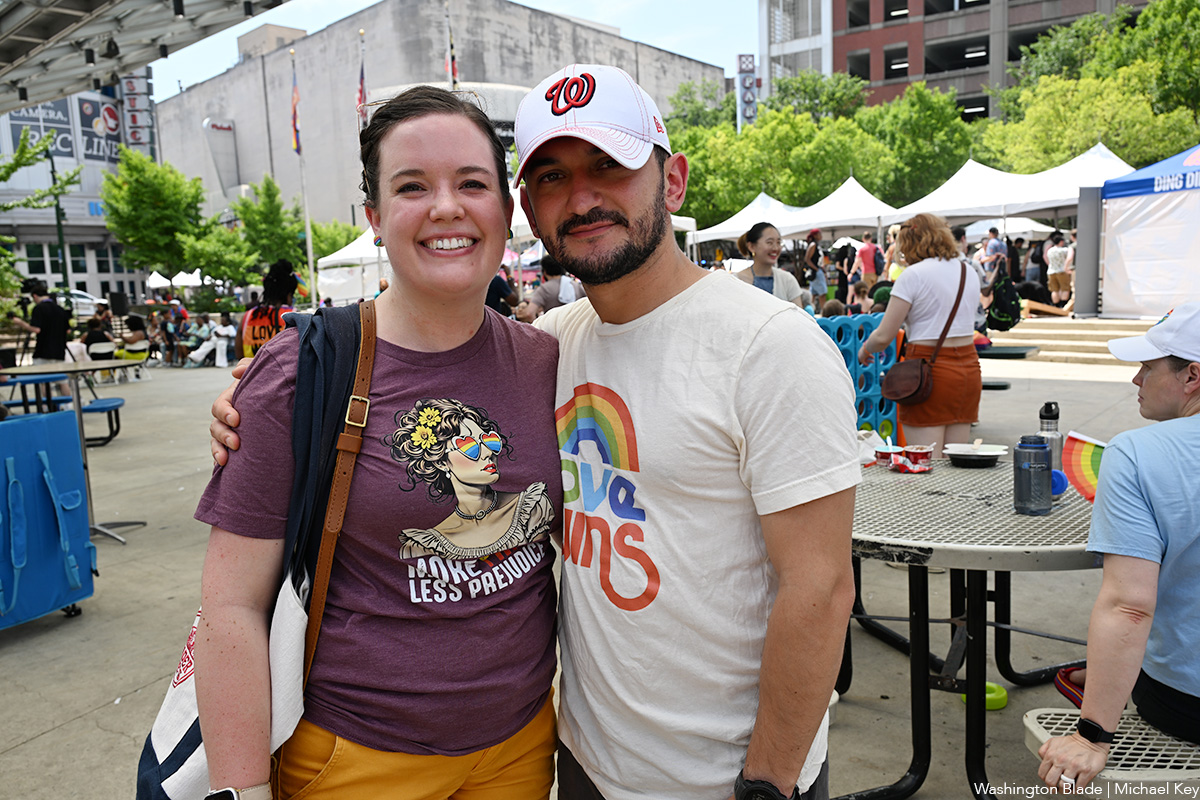
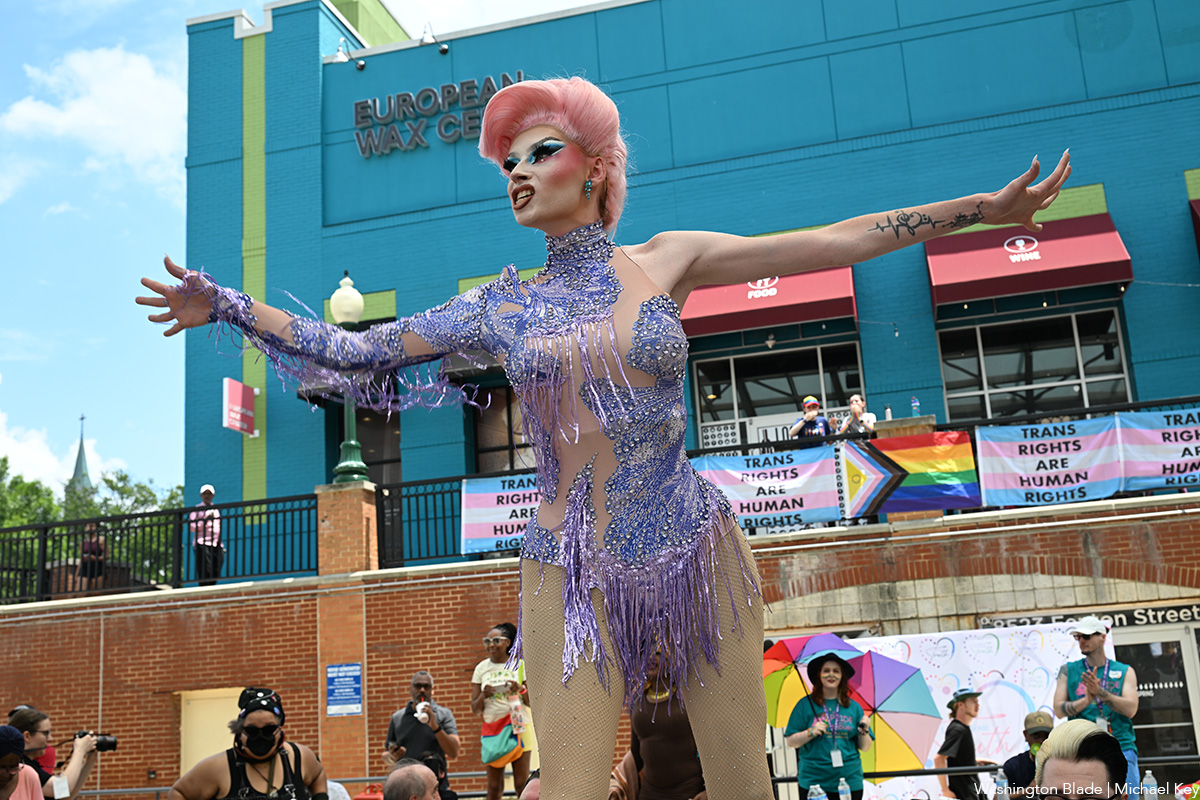
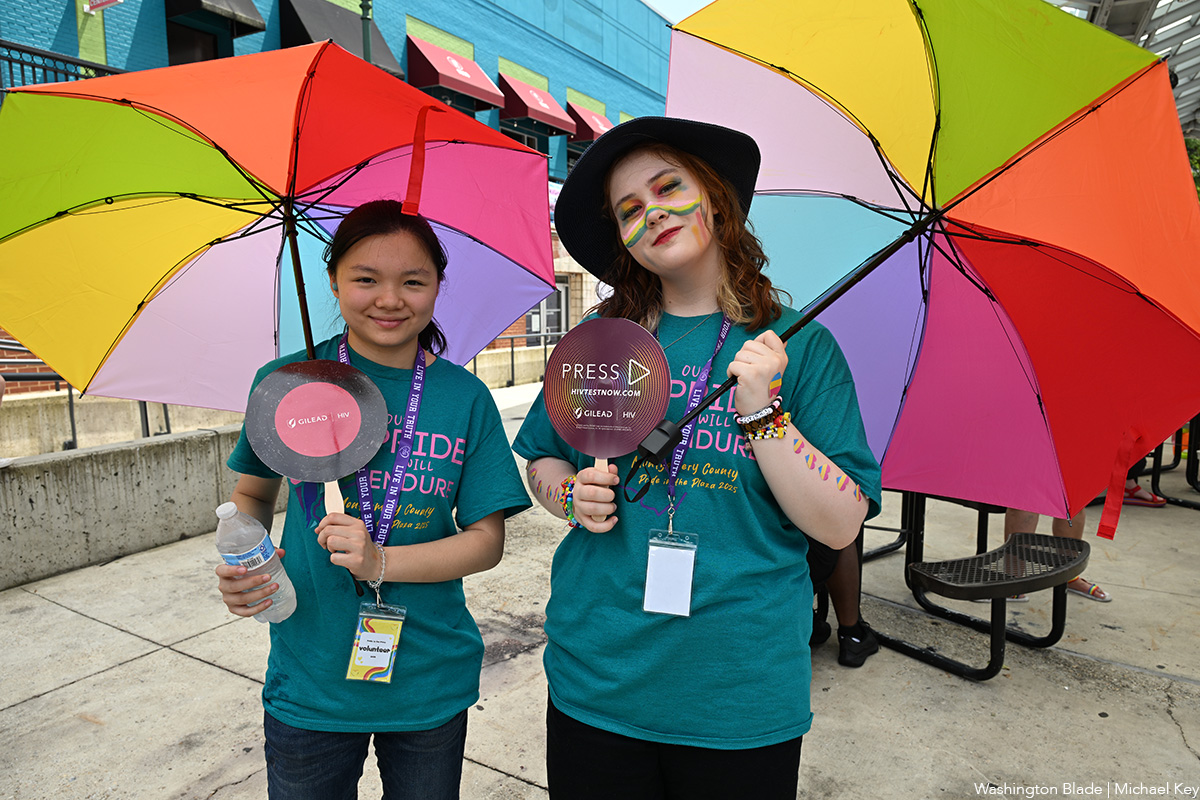
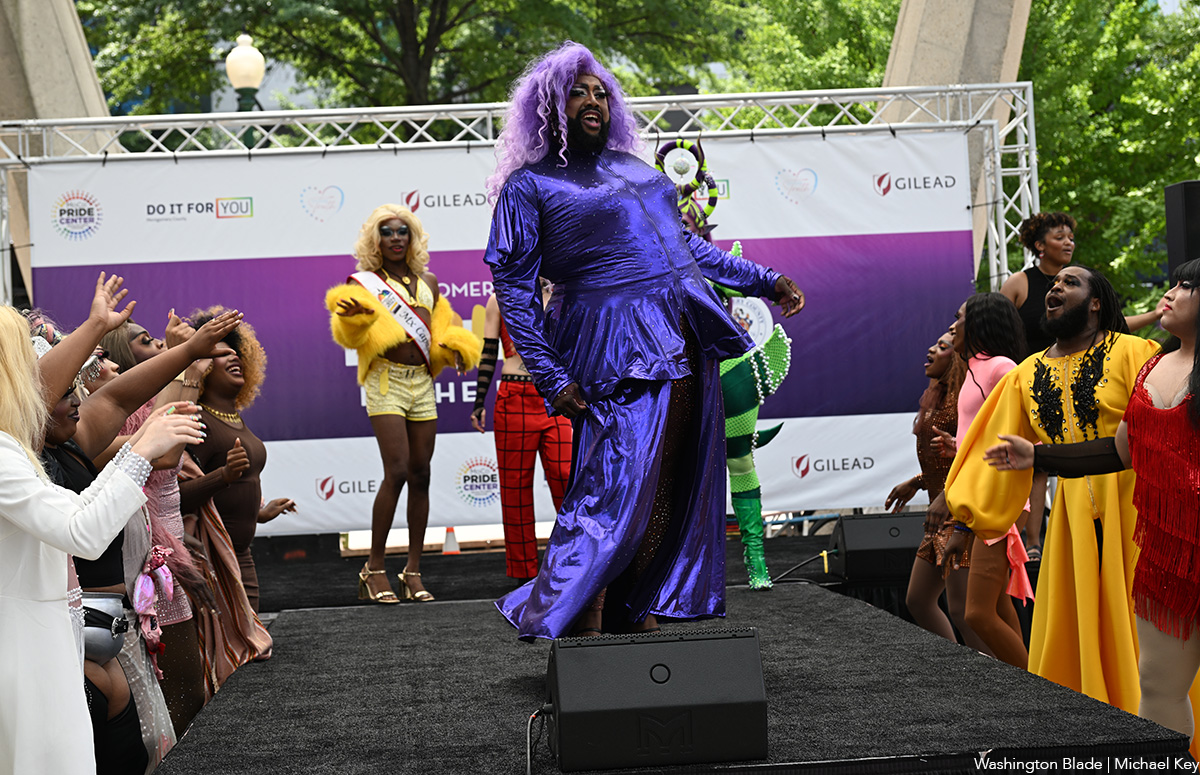
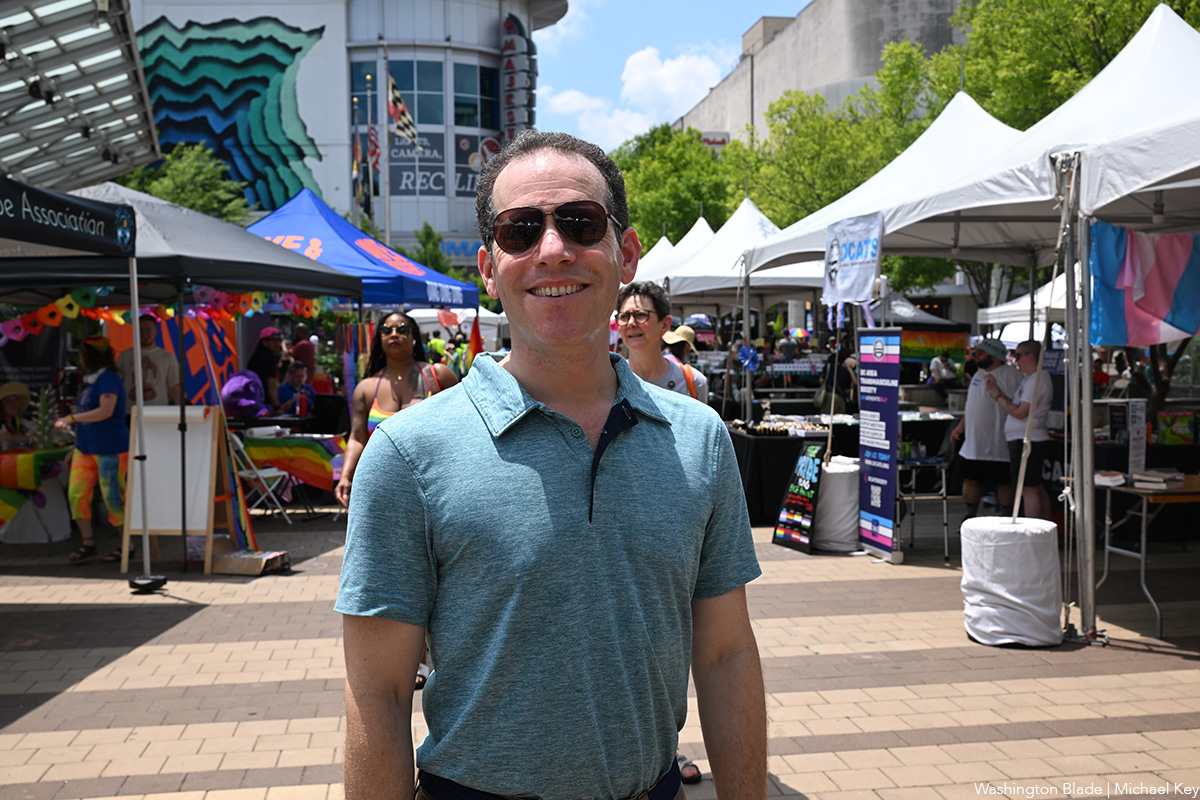
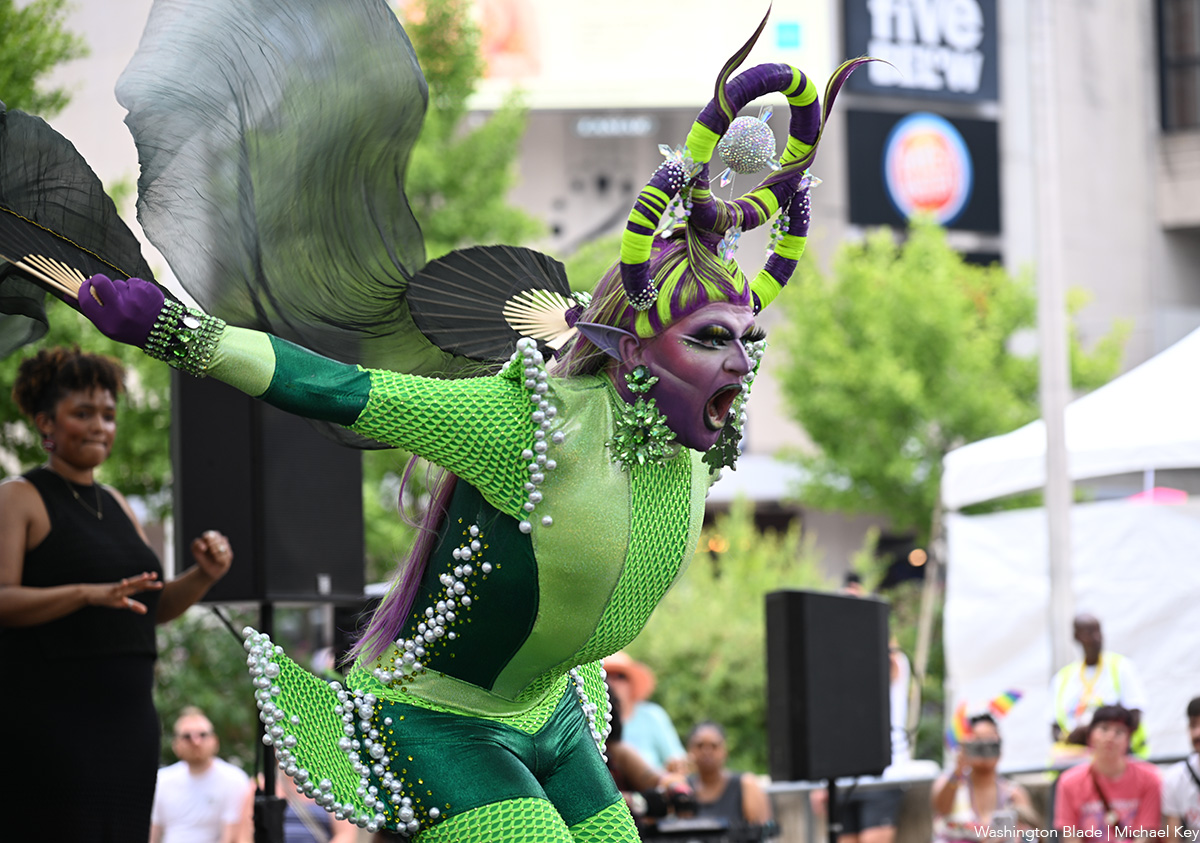
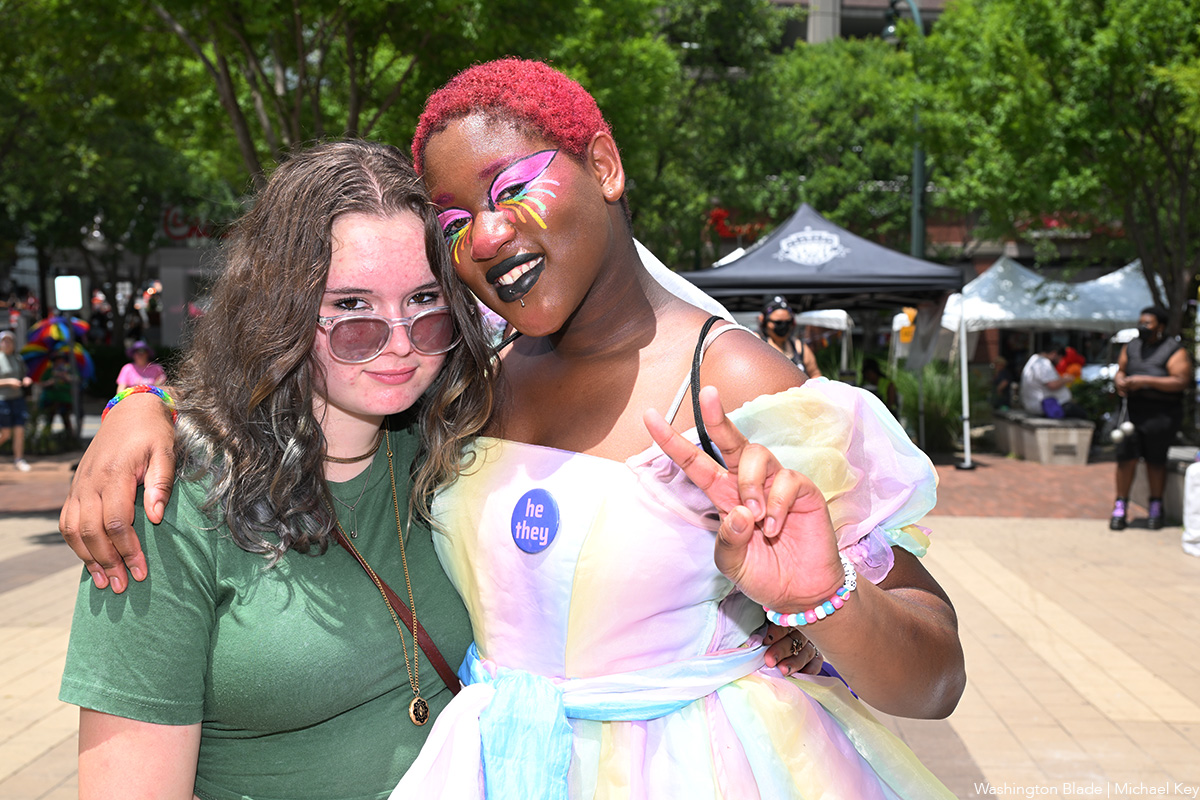
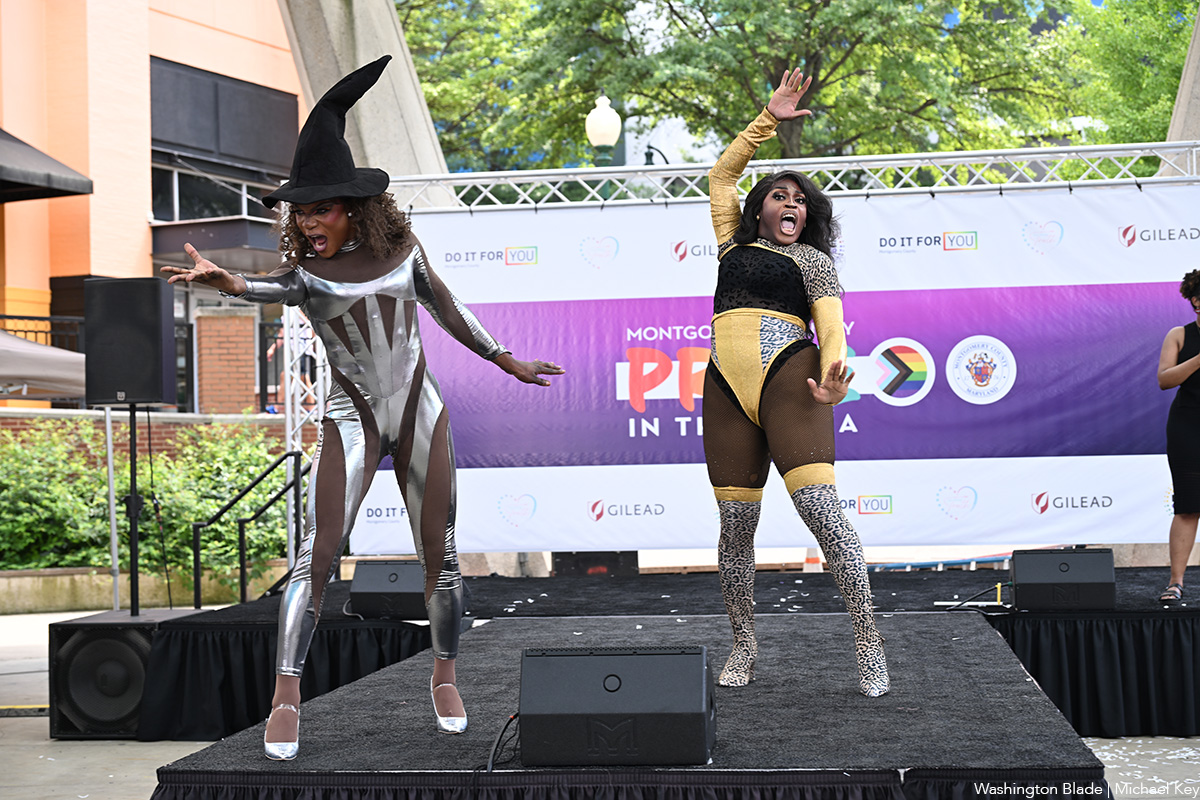
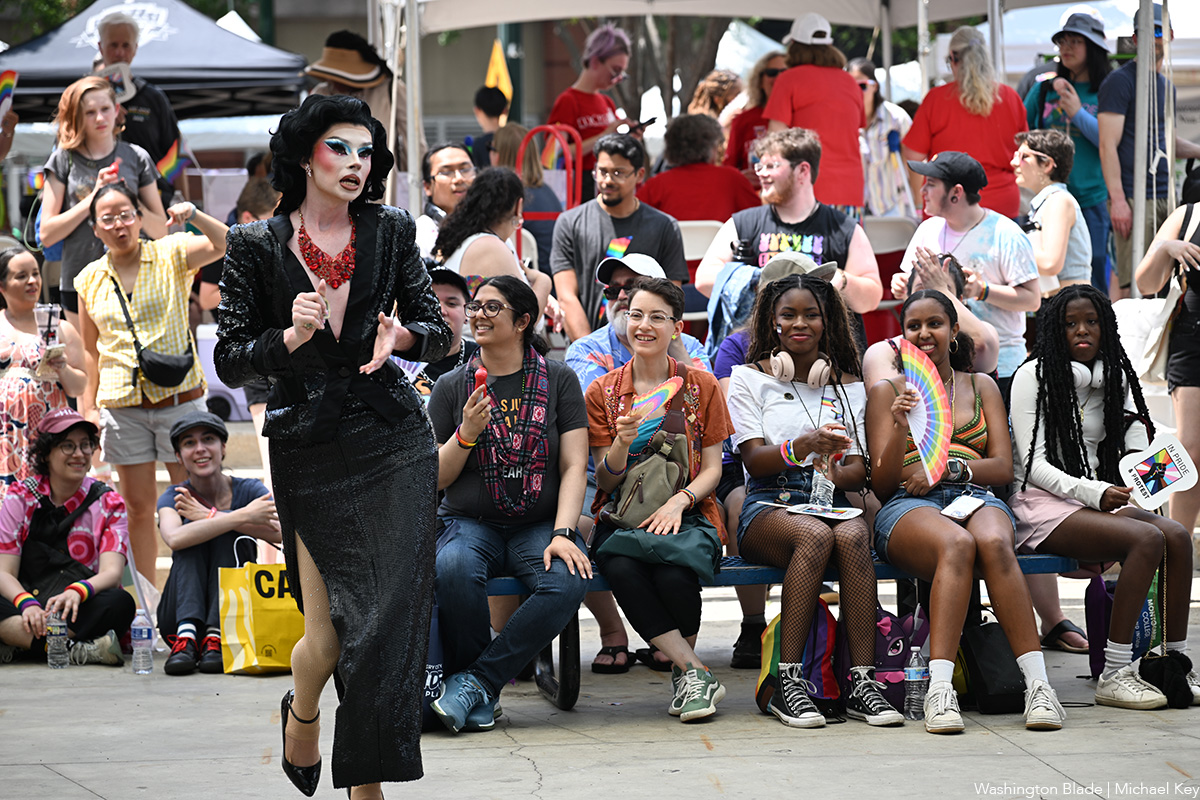
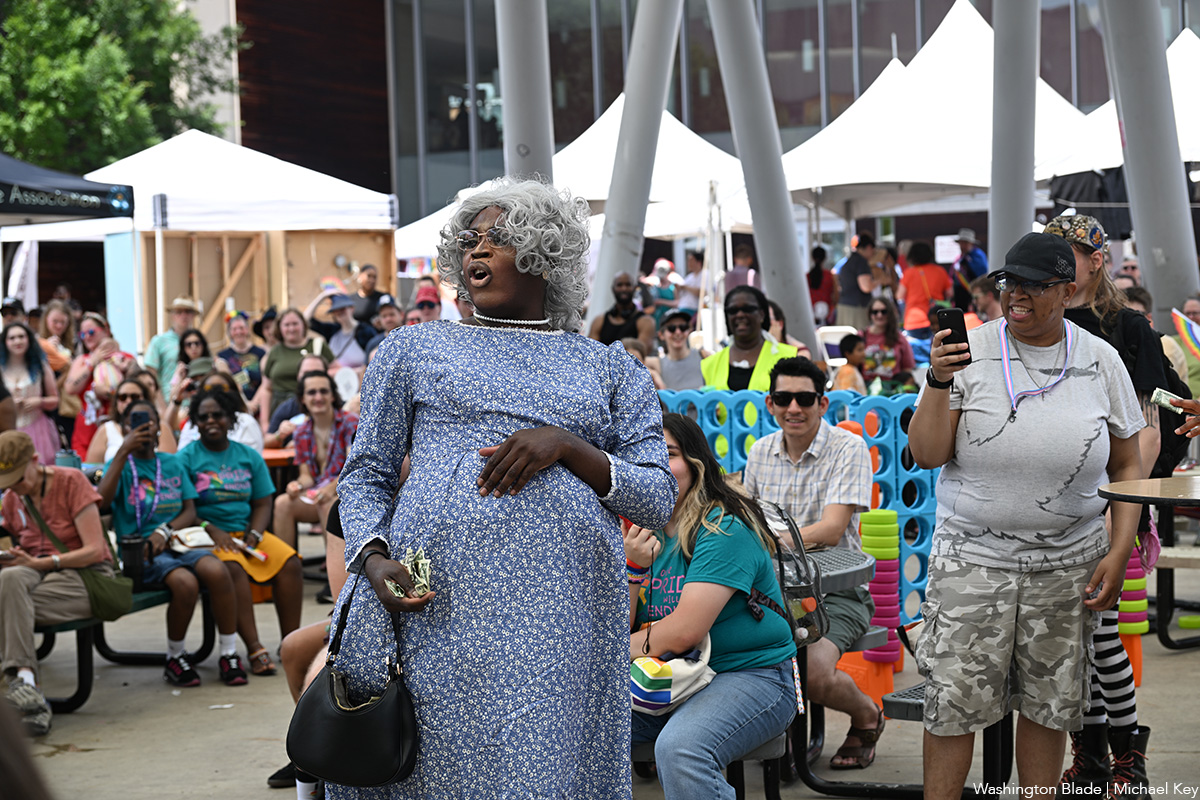

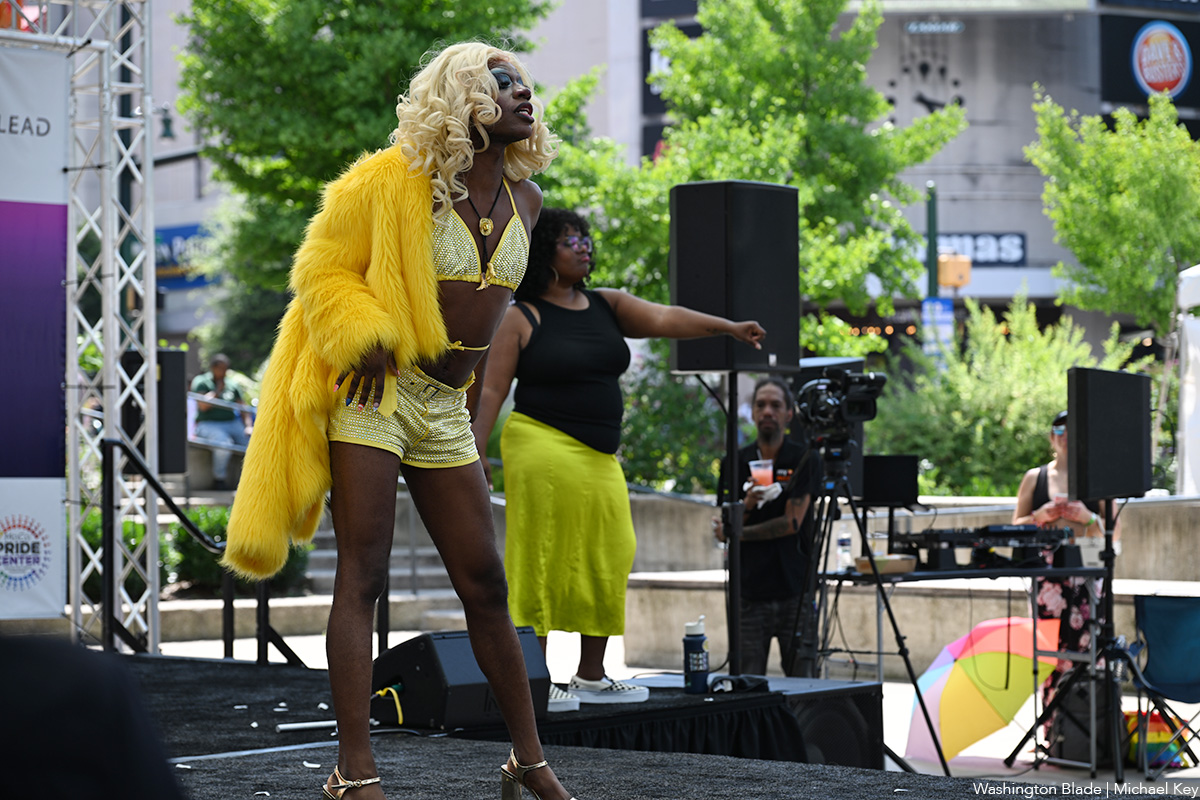

The fifth annual Fredericksburg Pride march and festival was held on Saturday, June 28. A march through the streets of downtown Fredericksburg, Va. was followed by a festival at Riverfront Park.
(Washington Blade photos by Michael Key)
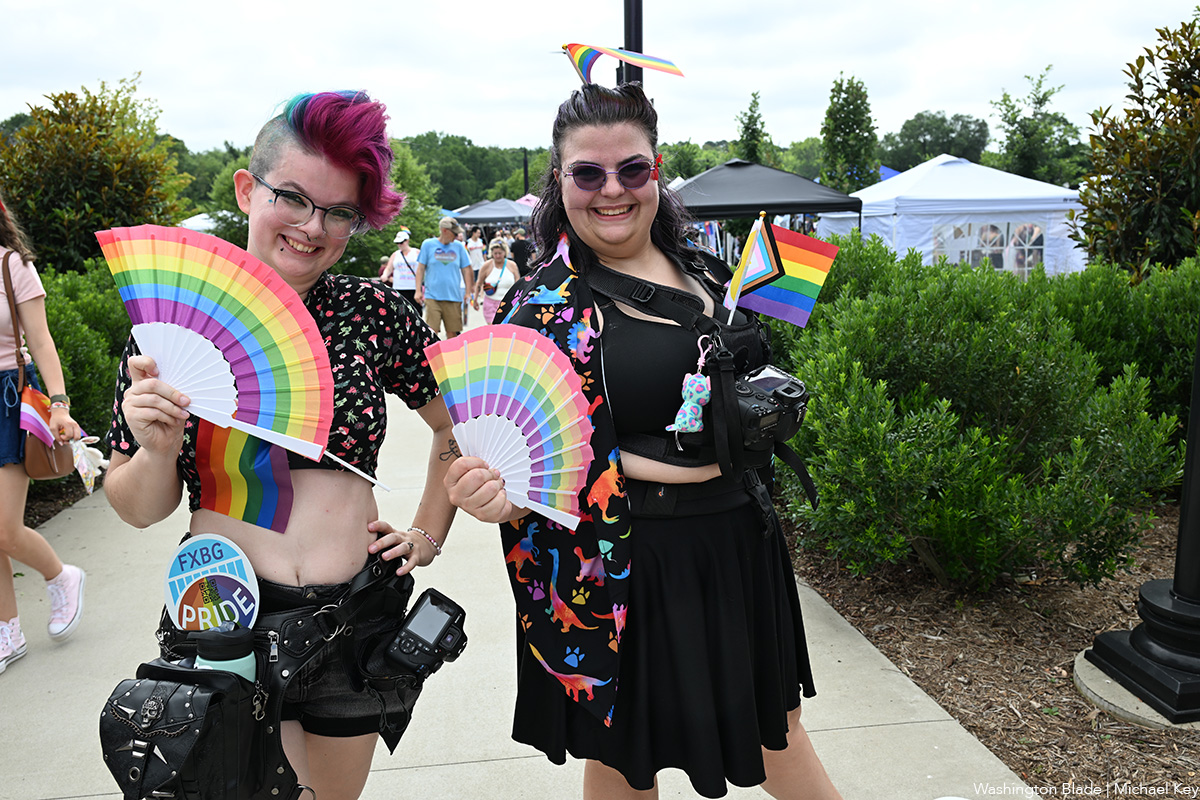
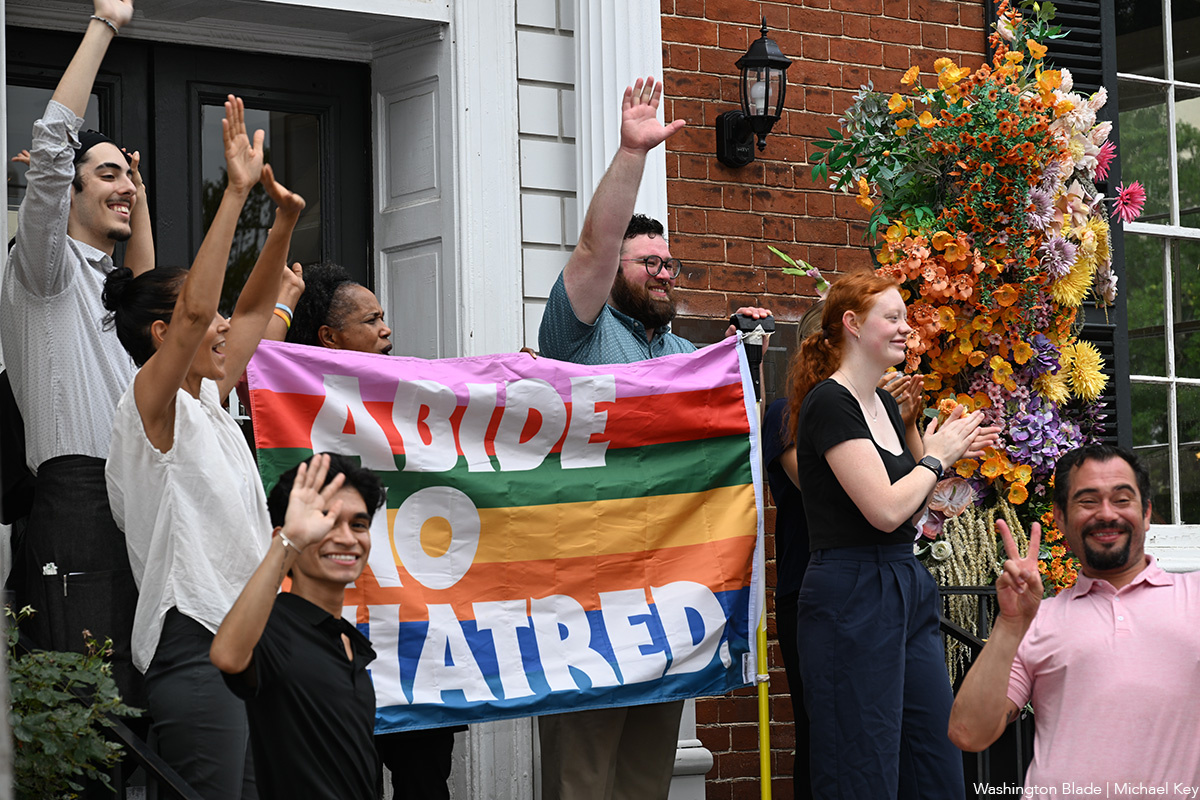
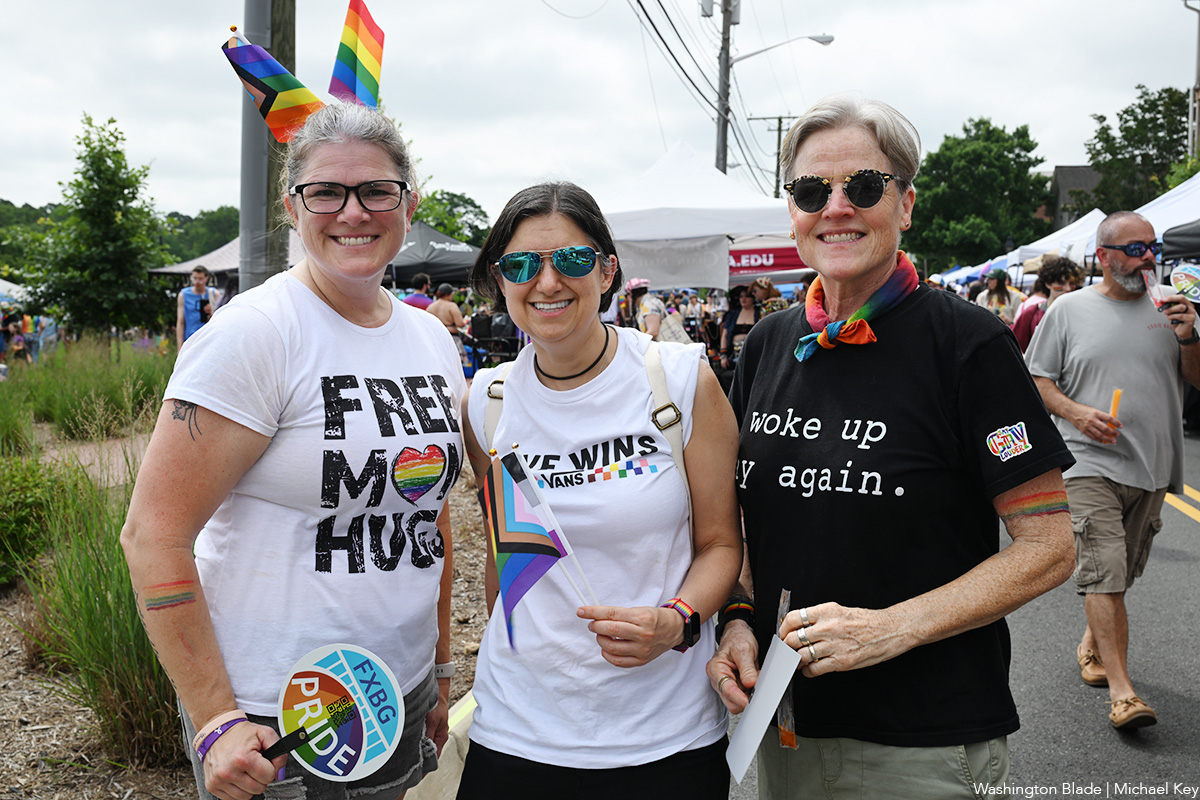
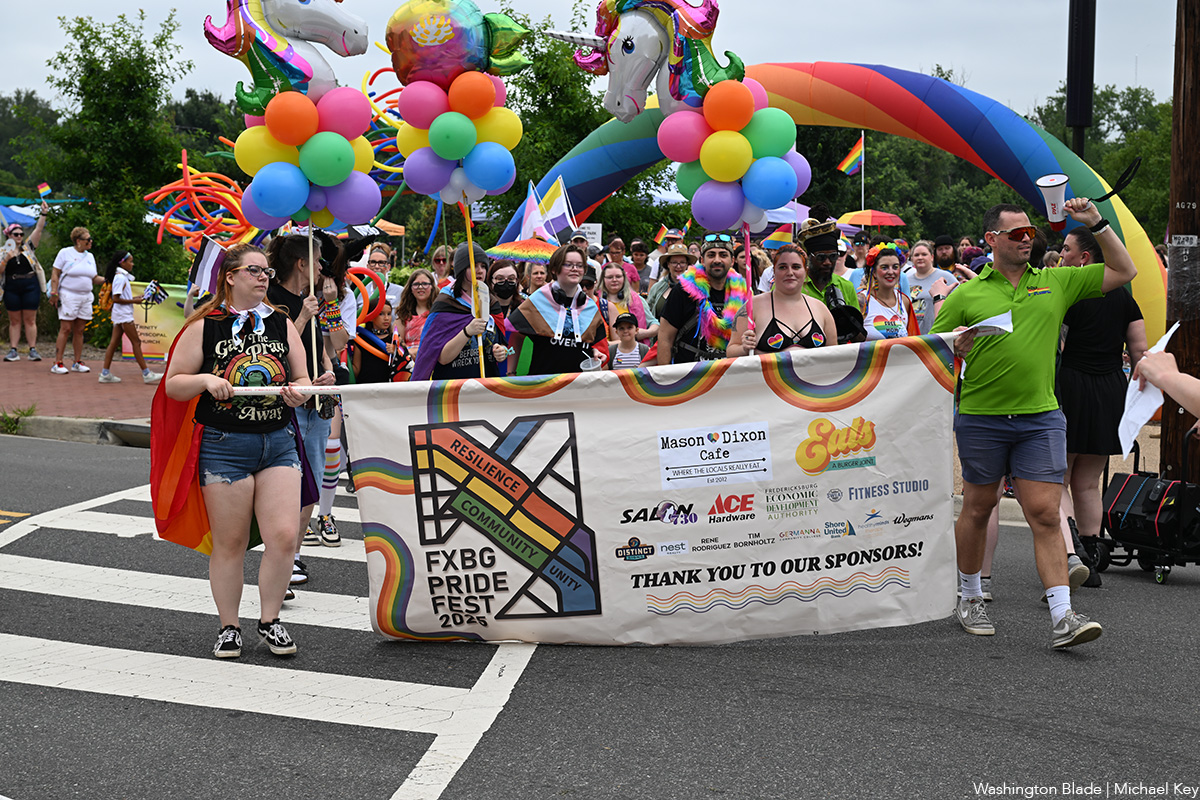
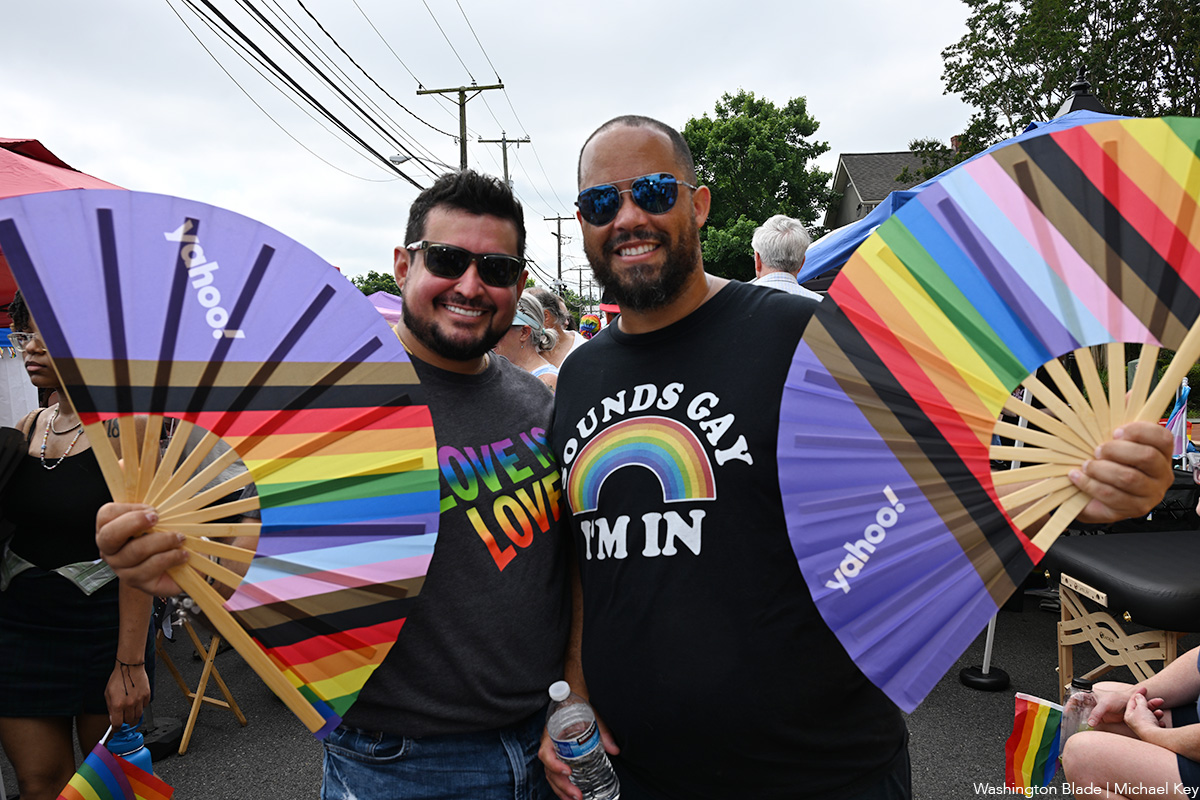
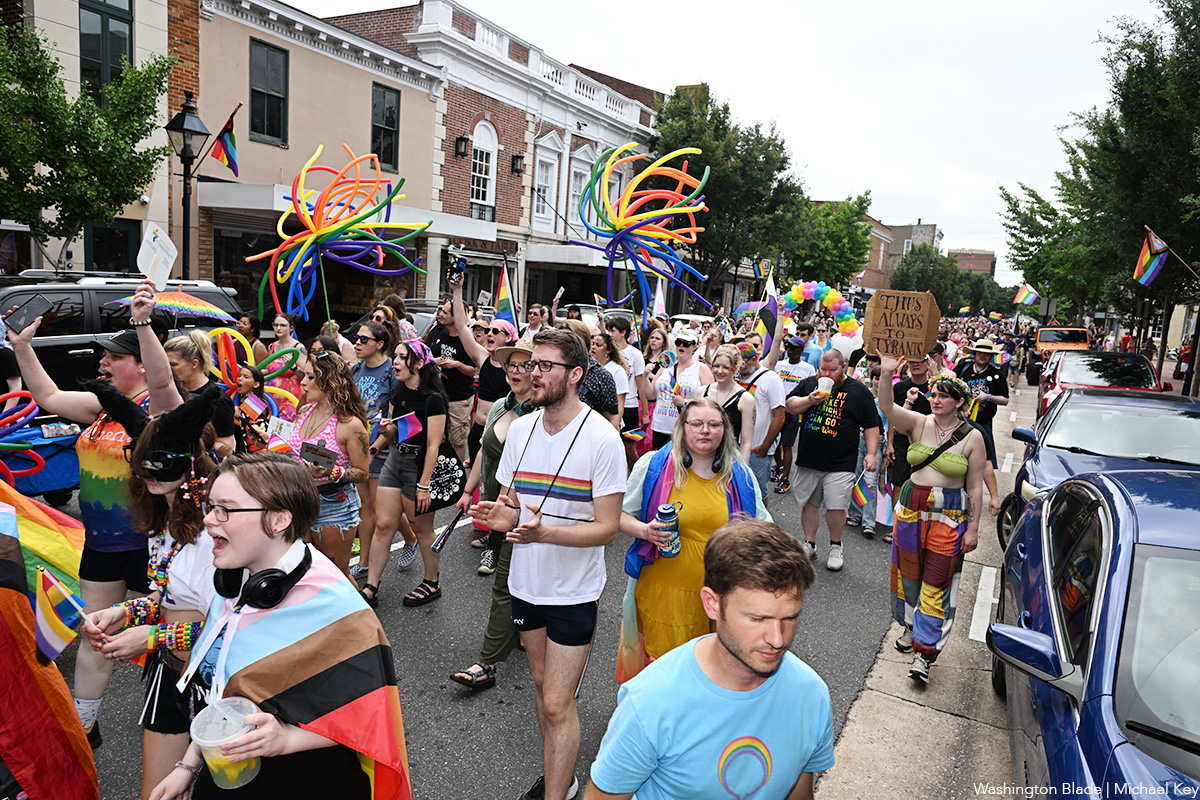

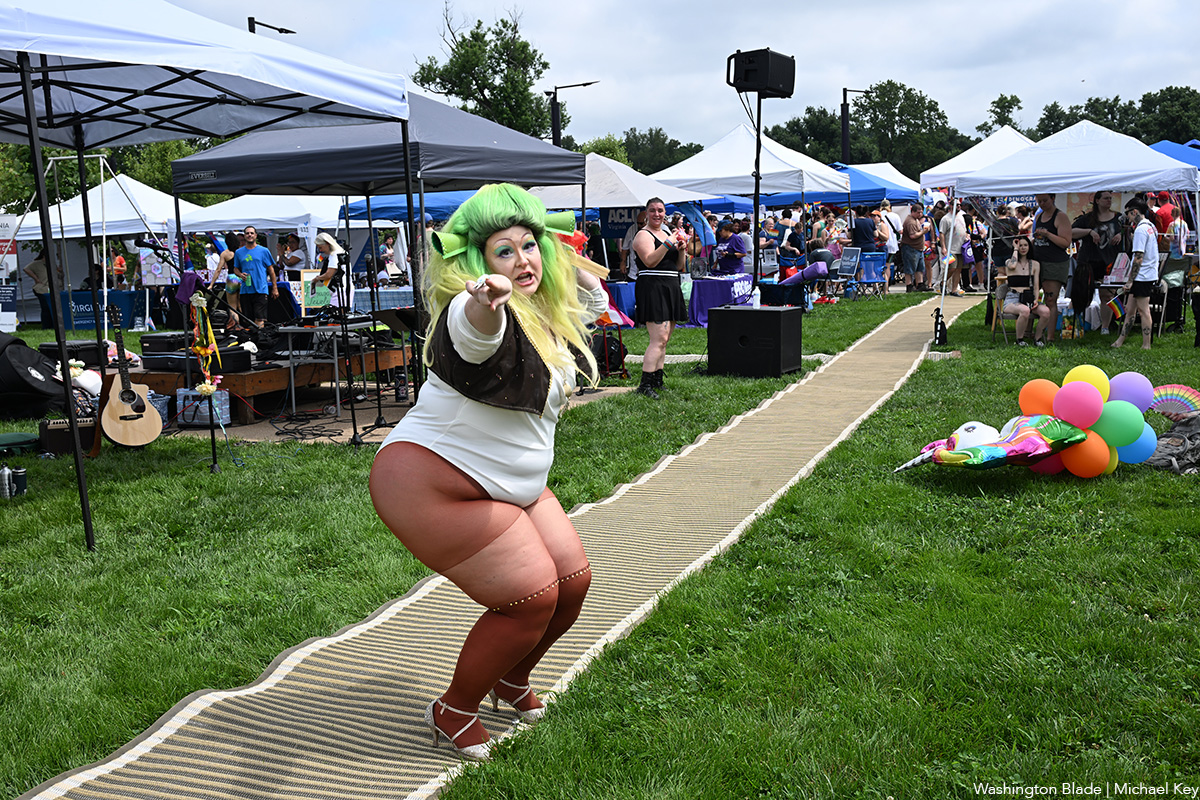




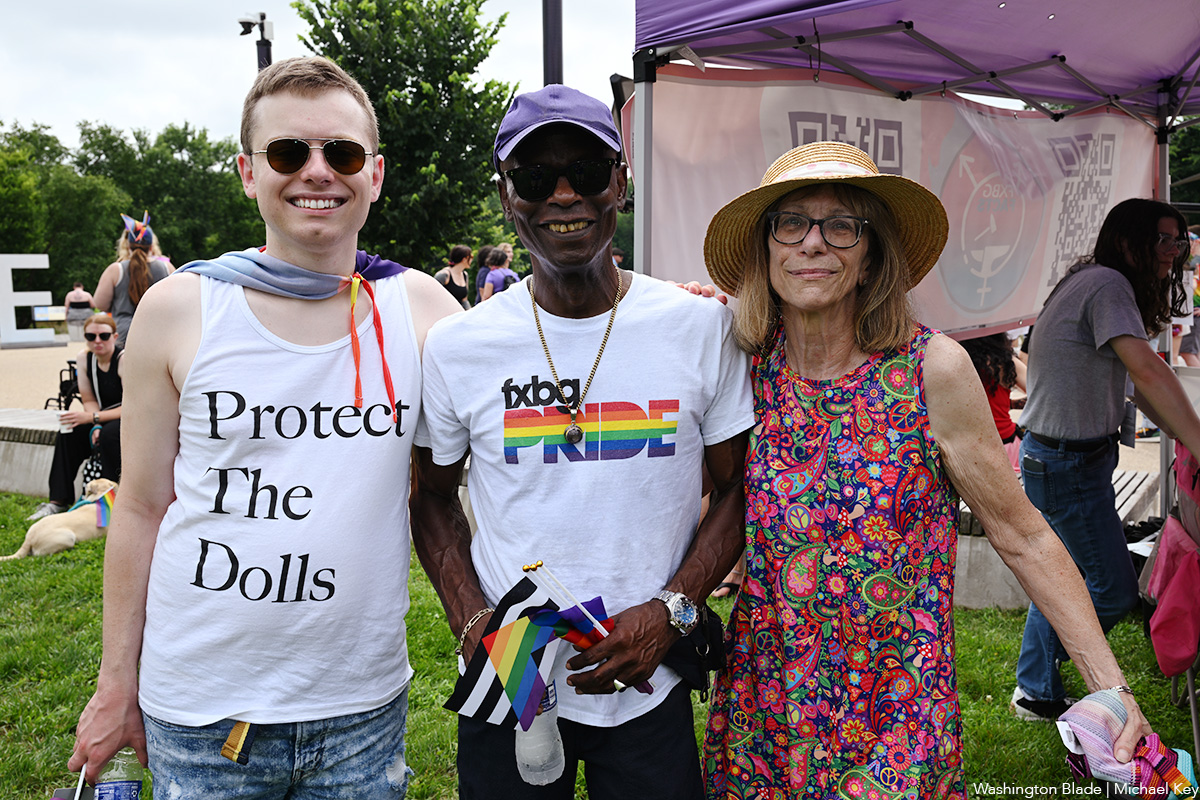


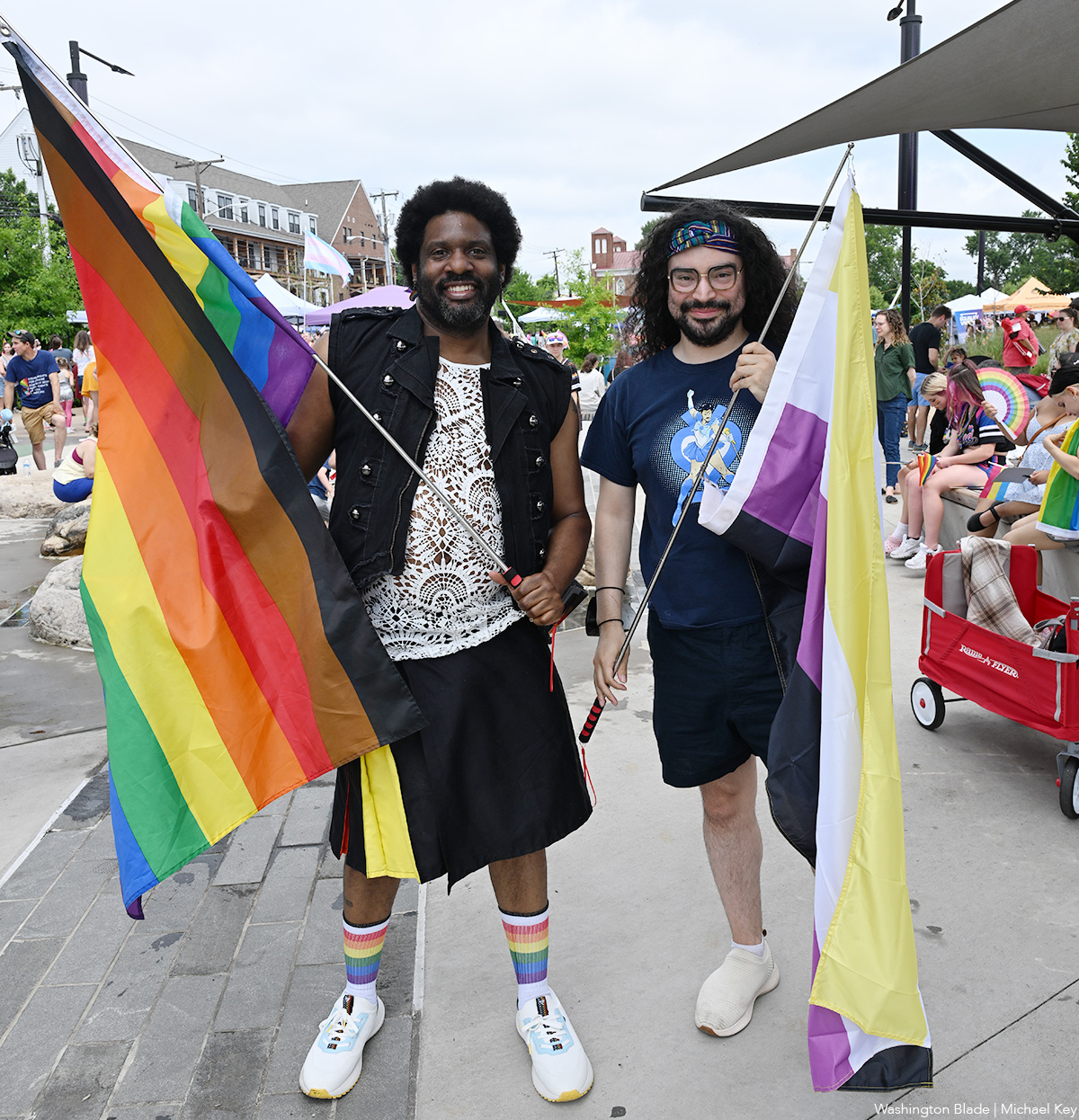
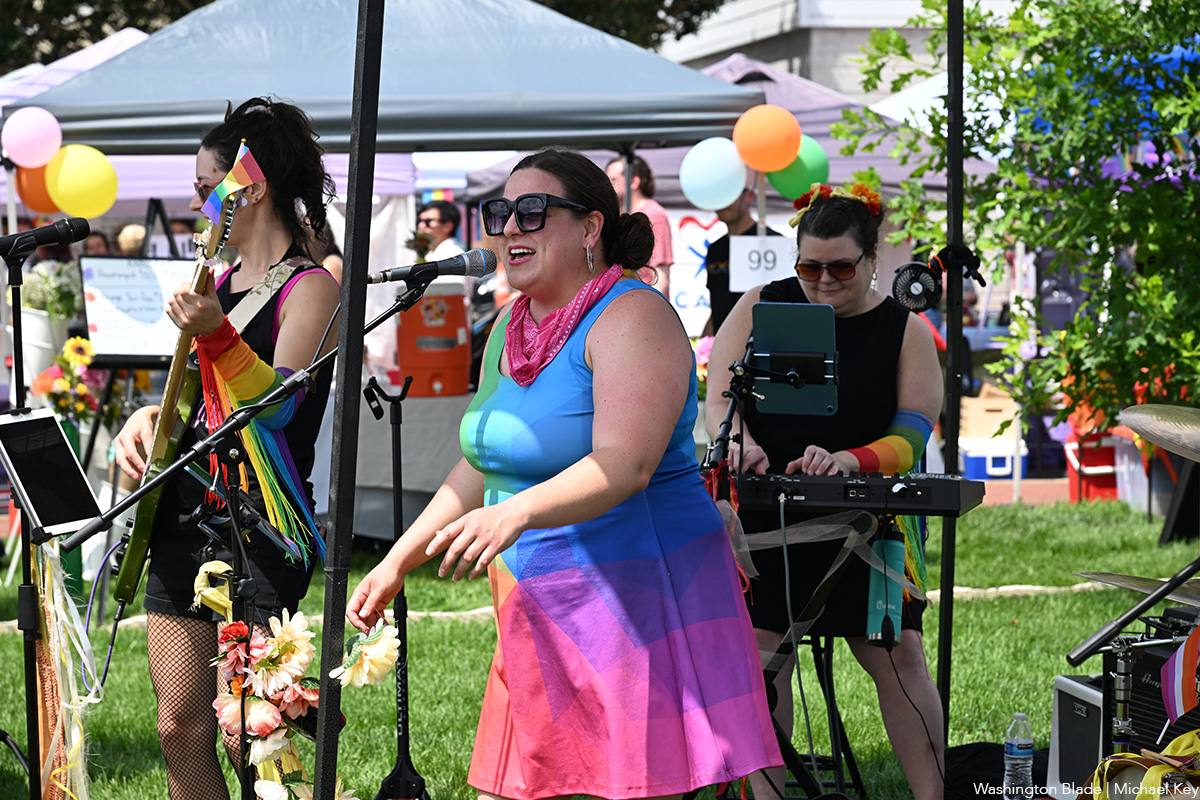
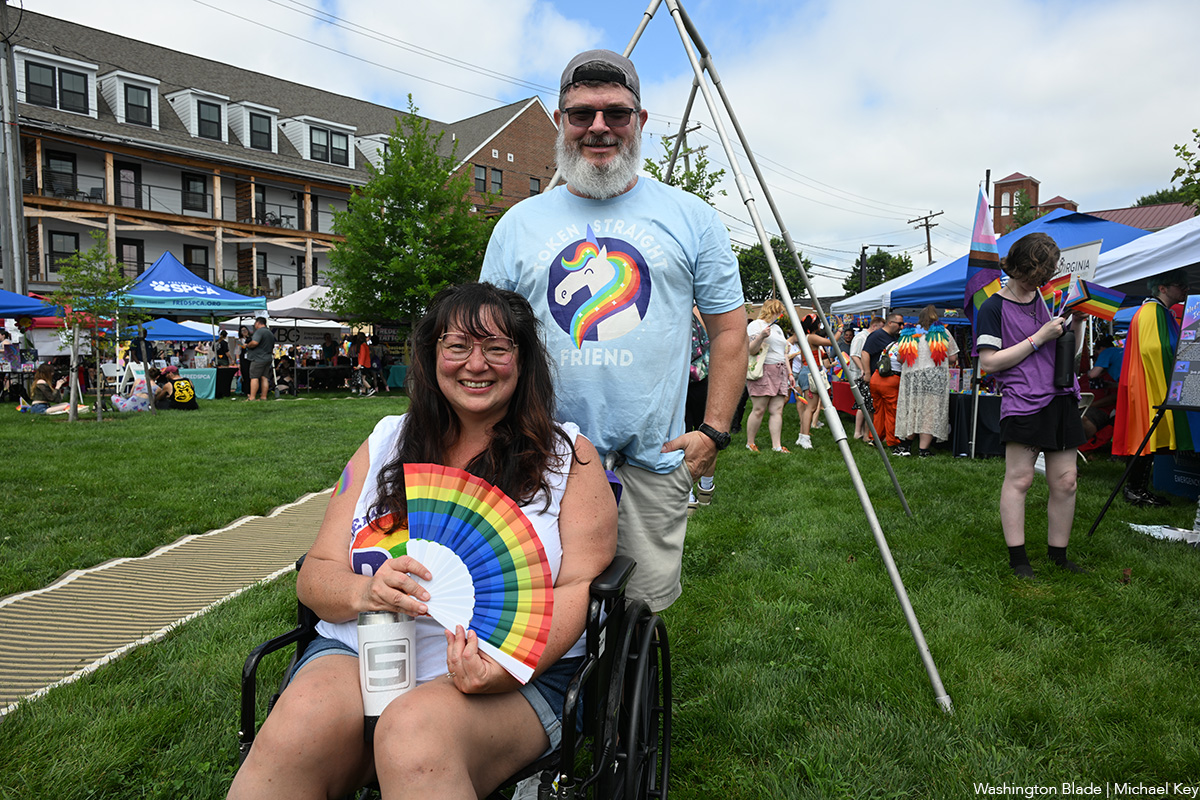
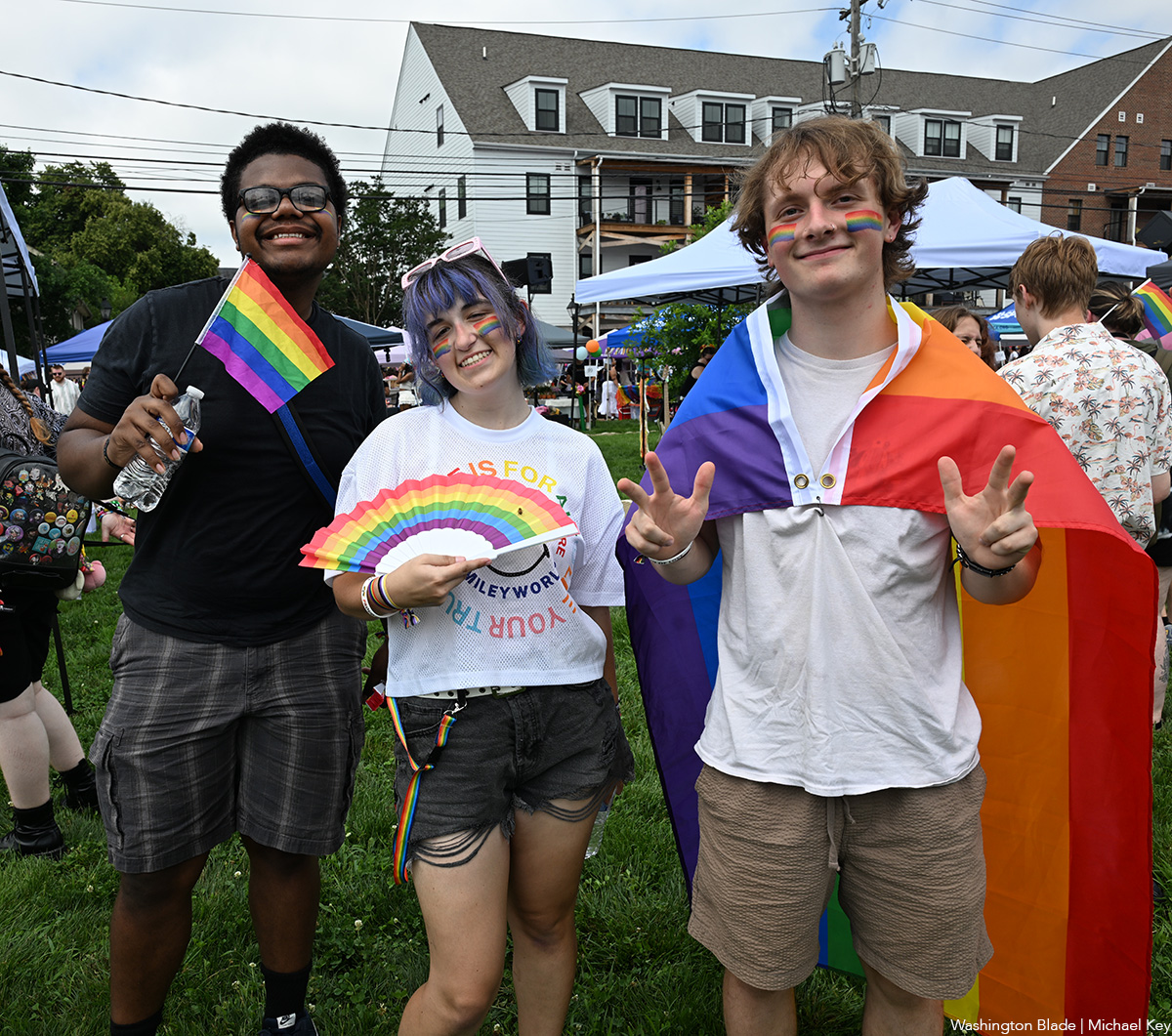
India
Anaya Bangar challenges ban on trans women in female cricket teams
Former Indian cricketer Sanjay Bangar’s daughter has received support
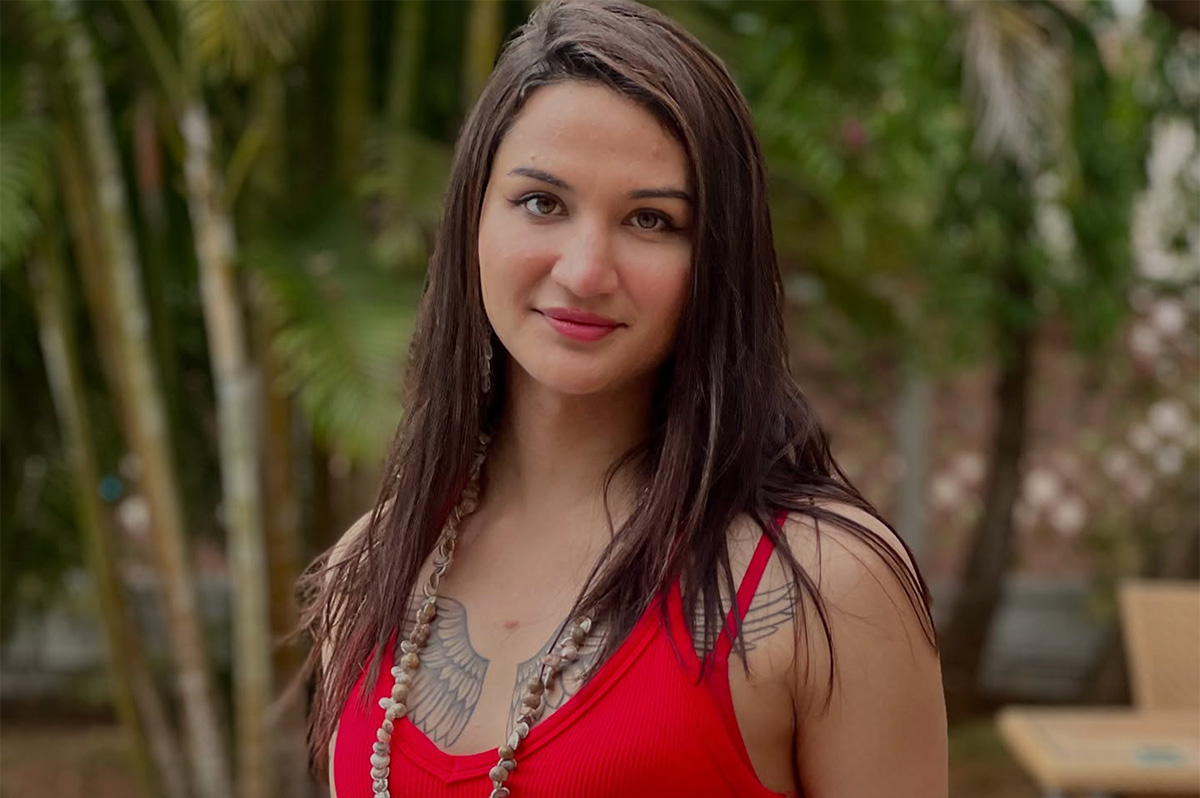
Anaya Bangar, the daughter of former Indian cricketer Sanjay Bangar, has partnered with the Manchester Metropolitan University Institute of Sport in the U.K. to assess her physiological profile following her gender-affirming surgery and undergoing hormone replacement therapy.
From January to March 2025, the 23-year-old underwent an eight-week research project that measured her glucose levels, oxygen uptake, muscle mass, strength, and endurance after extensive training.
The results, shared via Instagram, revealed her metrics align with those of cisgender female athletes, positioning her as eligible for women’s cricket under current scientific standards. Bangar’s findings challenge the International Cricket Council’s 2023 ban on transgender athletes in women’s cricket, prompting her to call for a science-based dialogue with the Board of Control for Cricket in India and the ICC to reform policies for trans inclusion.
“I am talking with scientific evidence in my hand,” Bangar said in an interview posted to her Instagram page. “So, I hope, this makes an impact and I will be hoping to BCCI and ICC talking with me and discussing this further.”
On Nov. 21, 2023, the ICC enacted a controversial policy barring trans women from international women’s cricket. Finalized after a board meeting in Ahmedabad, India, the regulation prohibits any trans player who has experienced male puberty from competing, irrespective of gender-affirming surgery or hormone therapy. Developed through a 9-month consultation led by the ICC’s Medical Advisory Committee, the rule aims to safeguard the “integrity, safety, and fairness” of women’s cricket but has drawn criticism for excluding athletes like Canada’s Danielle McGahey, the first trans woman to play internationally. The policy, which allows domestic boards to set their own rules, is slated for review by November 2025.
Bangar shared a document on social media verifying her participation in a physiological study at the Manchester Metropolitan University Institute of Sport, conducted from Jan. 20 to March 3, 2025, focused on cricket performance. The report confirmed that her vital metrics — including hemoglobin, blood glucose, peak power, and mean power — aligned with those of cisgender female athletes. Initially, her fasting blood glucose measured 6.1 mmol/L, slightly above the typical non-diabetic range of 4.0–5.9 mmol/L, but subsequent tests showed it normalized, reinforcing the study’s findings that her physical profile meets female athletic standards.
“I am submitting this to the BCCI and ICC, with full transparency and hope,” said Bangar. “My only intention is to start a conversation based on facts not fear. To build space, not divide it.”
In a letter to the BCCI and the ICC, Bangar emphasized her test results from the Manchester Metropolitan University study. She explained that the research aimed to assess how hormone therapy had influenced her strength, stamina, hemoglobin, glucose levels, and overall performance, benchmarked directly against cisgender female athletic standards.
Bangar’s letter to the BCCI and the ICC clarified the Manchester study was not intended as a political statement but as a catalyst for a science-driven dialogue on fairness and inclusion in cricket. She emphasized the importance of prioritizing empirical data over assumptions to shape equitable policies for trans athletes in the sport.
Bangar urged the BCCI, the world’s most influential cricket authority, to initiate a formal dialogue on trans women’s inclusion in women’s cricket, rooted in medical science, performance metrics, and ethical fairness. She called for the exploration of eligibility pathways based on sport-specific criteria, such as hemoglobin thresholds, testosterone suppression timelines, and standardized performance testing. Additionally, she advocated for collaboration with experts, athletes, and legal advisors to develop policies that balance inclusivity with competitive integrity.
“I am releasing my report and story publicly not for sympathy, but for truth. Because inclusion does not mean ignoring fairness, it means measuring it, transparently and responsibly,” said Bangar in a letter to the BCCI. “I would deeply appreciate the opportunity to meet with you or a representative of the BCCI or ICC to present my findings, discuss possible policy pathways, and work towards a future where every athlete is evaluated based on real data, not outdated perceptions.”
Before her transition, Bangar competed for Islam Gymkhana in Mumbai and Hinckley Cricket Club in the U.K., showcasing her talent in domestic cricket circuits. Her father, Sanjay Bangar, was a dependable all-rounder for the Indian national cricket team from 2001 to 2004, playing 12 test matches and 15 One Day Internationals. He later served as a batting coach for the Indian team from 2014 to 2019, contributing to its strategic development.
Cricket in India is a cultural phenomenon, commanding a fanbase of more than 1 billion, with more than 80 percent of global cricket viewership originating from the country.
The International Cricket Council, the sport’s governing body, oversees 12 full member nations and more than 90 associate members, with the U.S. recently gaining associate member status in 2019 and co-hosting the 2024 ICC Men’s T20 World Cup. The BCCI generated approximately $2.25 billion in revenue in the 2023–24 financial year, primarily from the Indian Premier League, bilateral series, and ICC revenue sharing. The ICC earns over $3 billion from media rights in India alone for the 2024–27 cycle, contributing nearly 90 percent of its global media rights revenue, with the BCCI receiving 38.5 percent of the ICC’s annual earnings, approximately $231 million per year.
Women’s cricket in India enjoys a growing fanbase, with over 300 million viewers for the Women’s Premier League in 2024, making it a significant driver of the sport’s global popularity. The International Cricket Council oversees women’s cricket in 12 full member nations and over 90 associate members, with the U.S. fielding a women’s team since gaining associate status in 2019 and competing in ICC events like the 2024 Women’s T20 World Cup qualifiers. The BCCI invests heavily in women’s cricket, allocating approximately $60 million annually to the WPL and domestic programs in 2024–25, while contributing to the ICC’s $20 million budget for women’s cricket development globally. India’s media market for women’s cricket, including WPL broadcasting rights, generated $120 million in 2024, accounting for over 50 percent of the ICC’s women’s cricket media revenue.
“As a woman, I feel when someone says that they are women, then they are, be trans or cis. A trans woman is definitely the same as a cis woman emotionally and in vitals, and specially, when someone is on hormone replacement therapy. Stopping Anaya Bangar from playing is discrimination and violation of her rights. It is really sad and painful that every trans woman need to fight and prove their identity everywhere,” said Indrani Chakraborty, an LGBTQ rights activist and a mother of a trans woman. “If ICC and BCCI is stopping her from playing for being transgender, then I will say this to be their lack of awareness and of course the social mindsets which deny acceptance.”
Chakraborty told the Blade that Bangar is an asset, no matter what. She said that the women’s cricket team will only benefit by participation, but the discriminating policies are the hindrance.
“Actually the transgender community face such discrimination in every sphere. In spite of being potent, they face rejection. This is highly inhuman. These attitudes is regressive and will never let to prosper. Are we really in 2025?,” said Chakraborty. “We, our mindset and the society are the issues. We, as a whole, need to get aware and have to come together for getting justice for Anaya. If today, we remain silent, the entire community will be oppressed. Proper knowledge of gender issues need to be understood.”
The BCCI and the International Cricket Council have not responded to the Blade’s repeated requests for comment.

